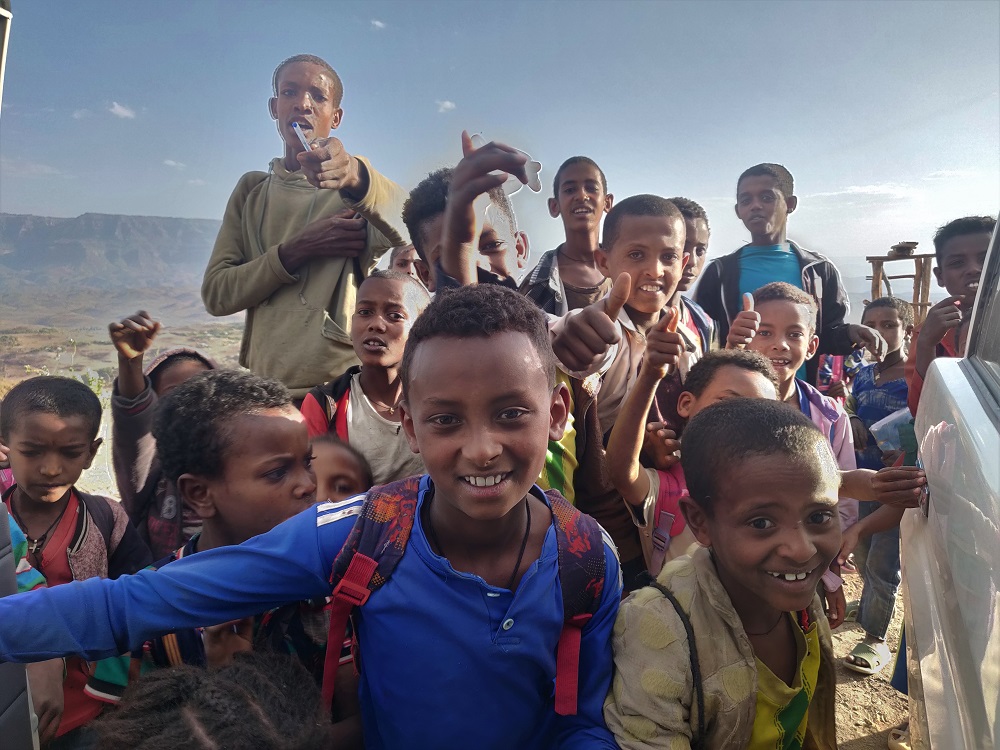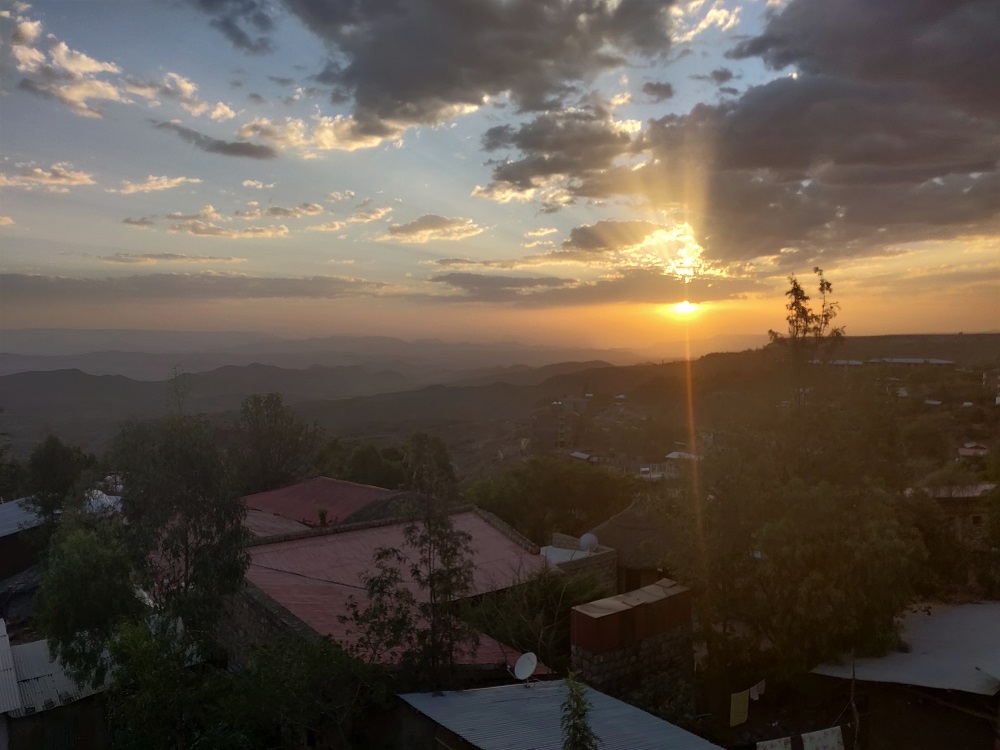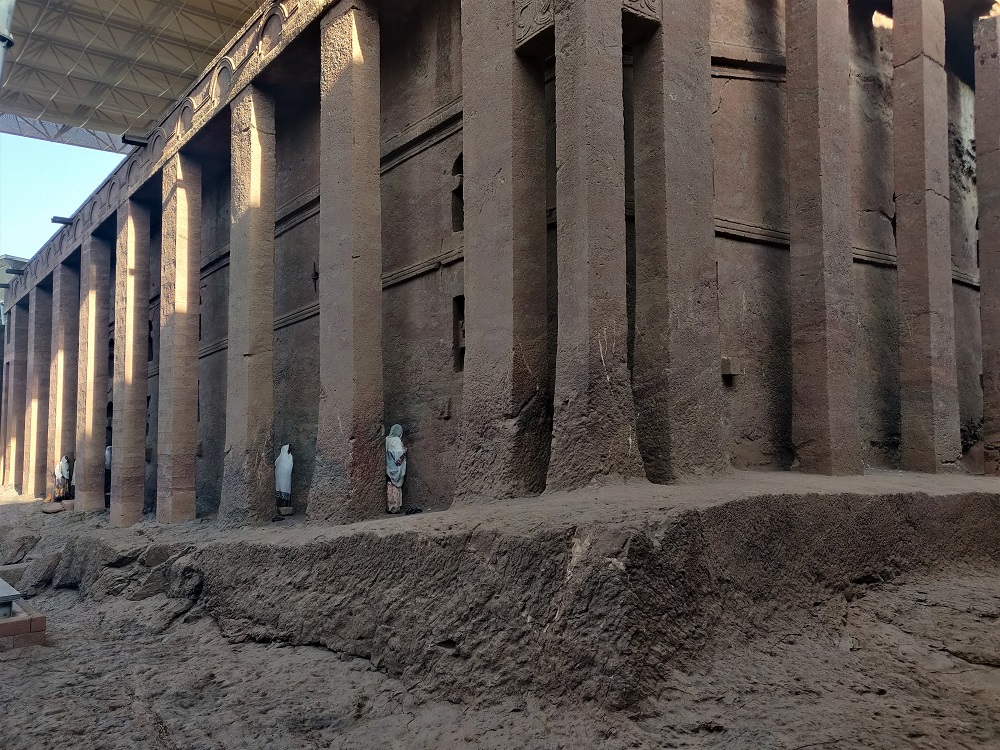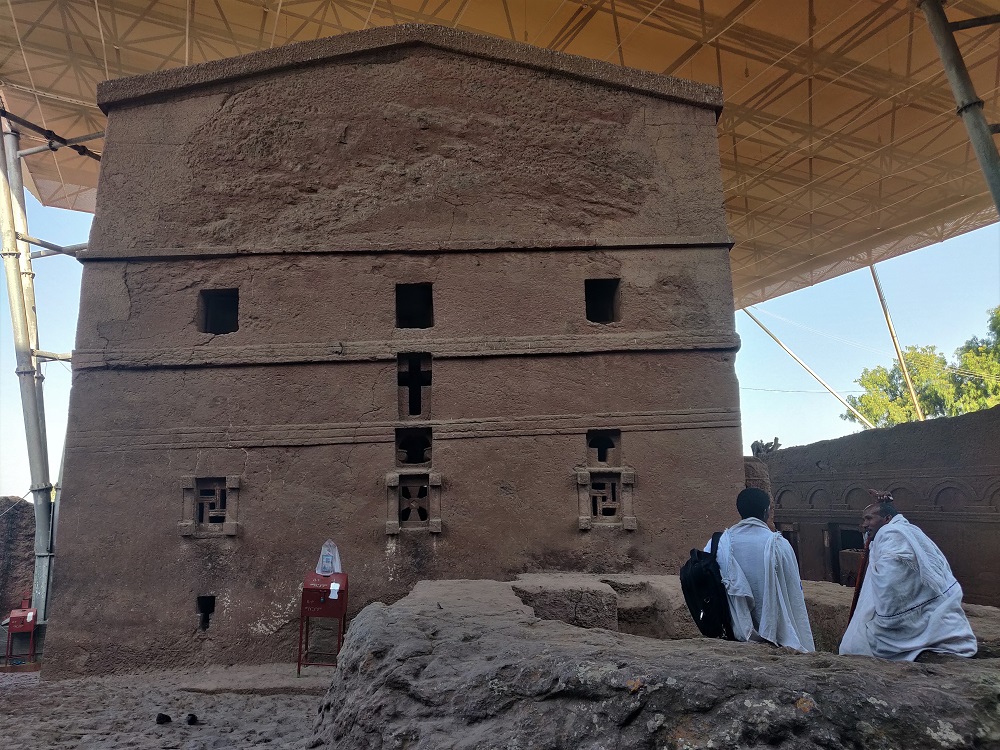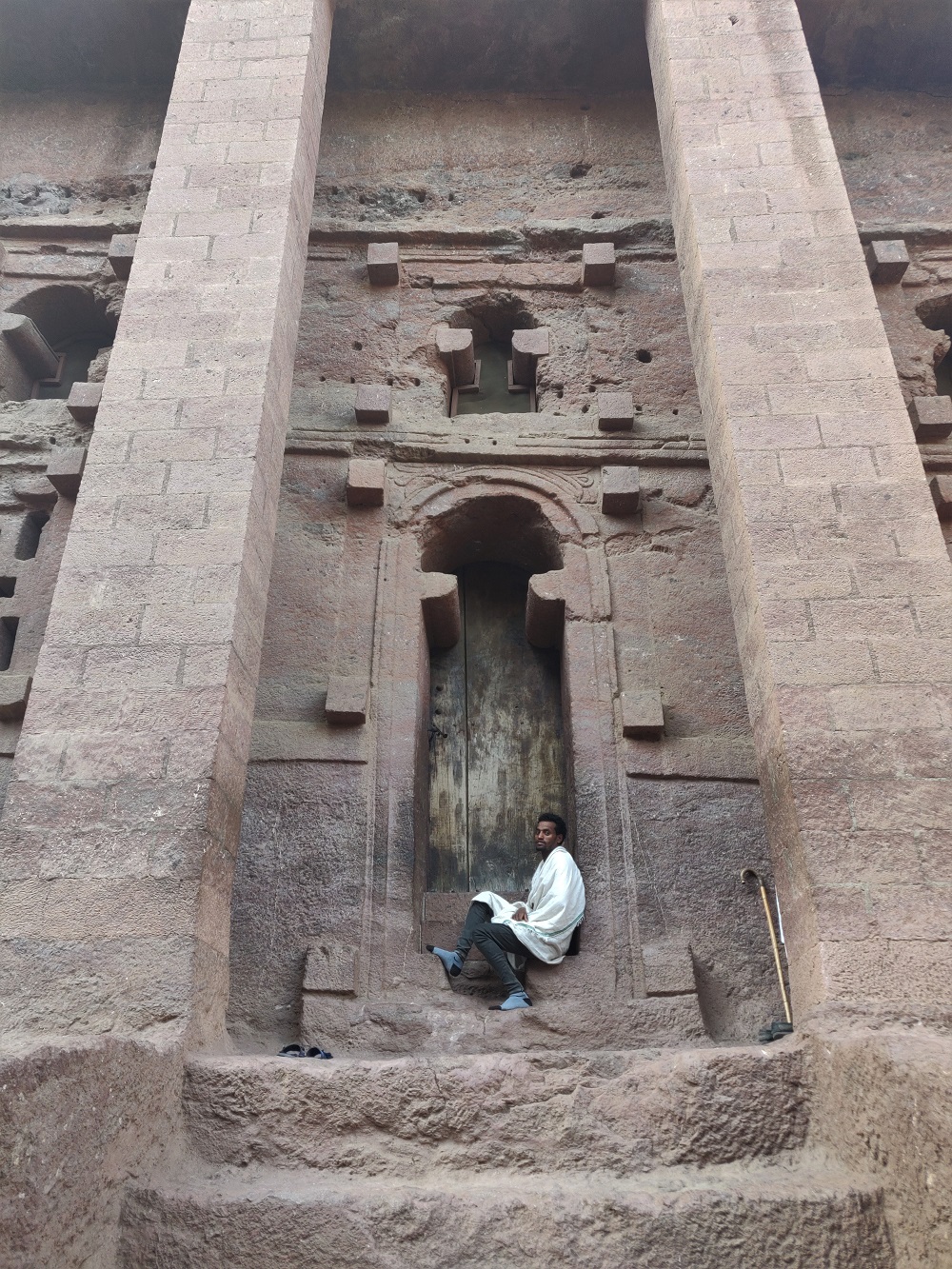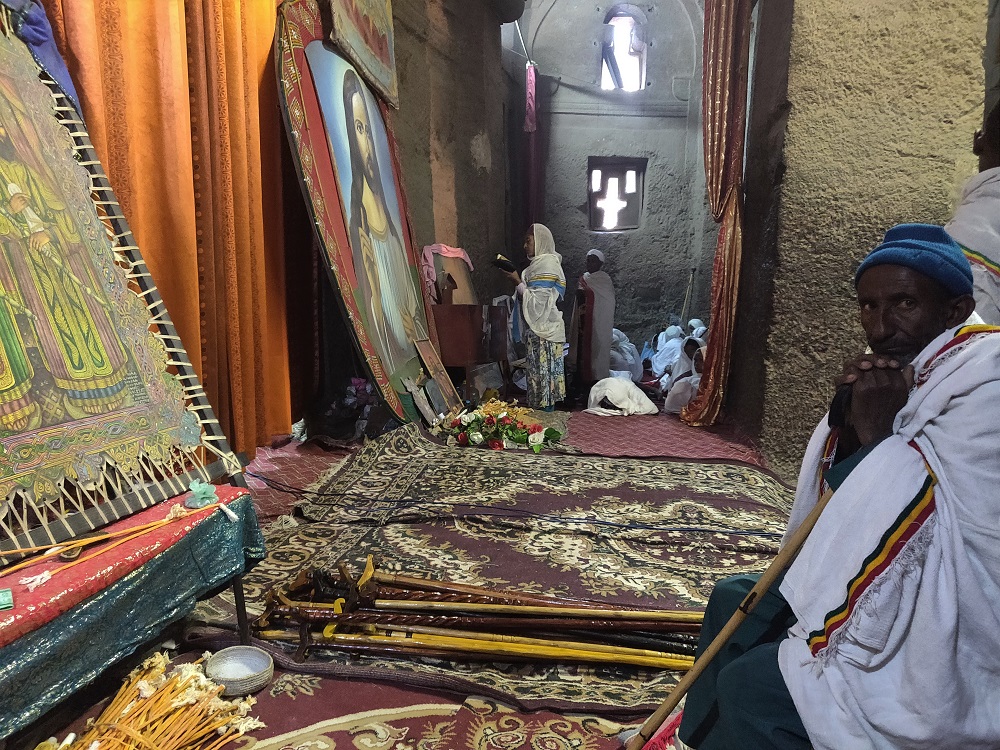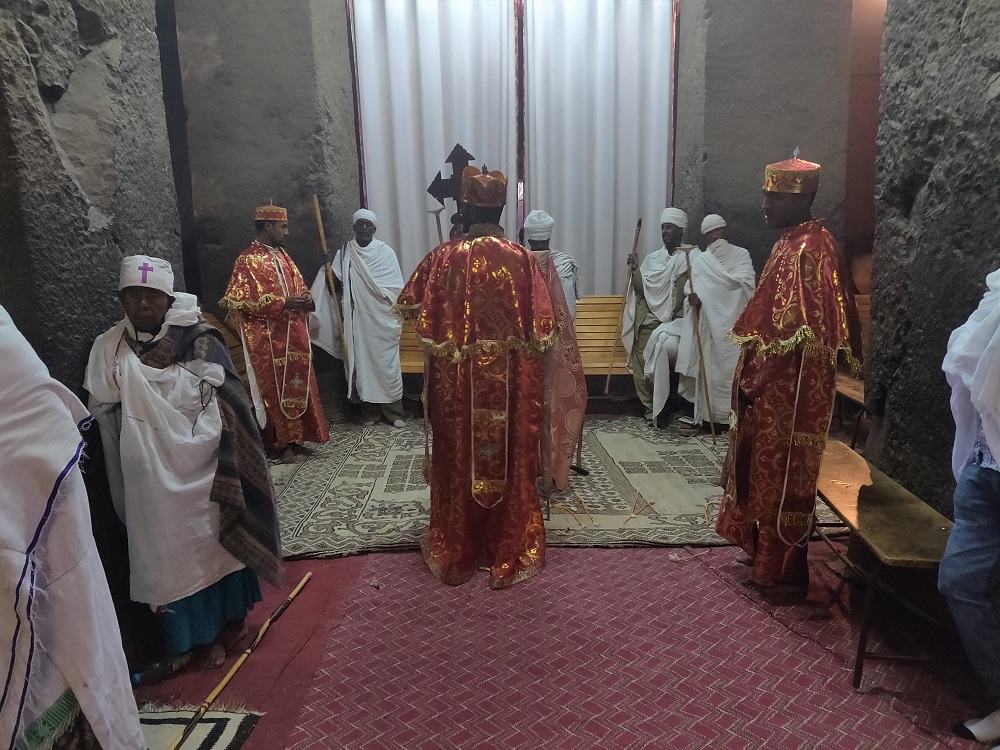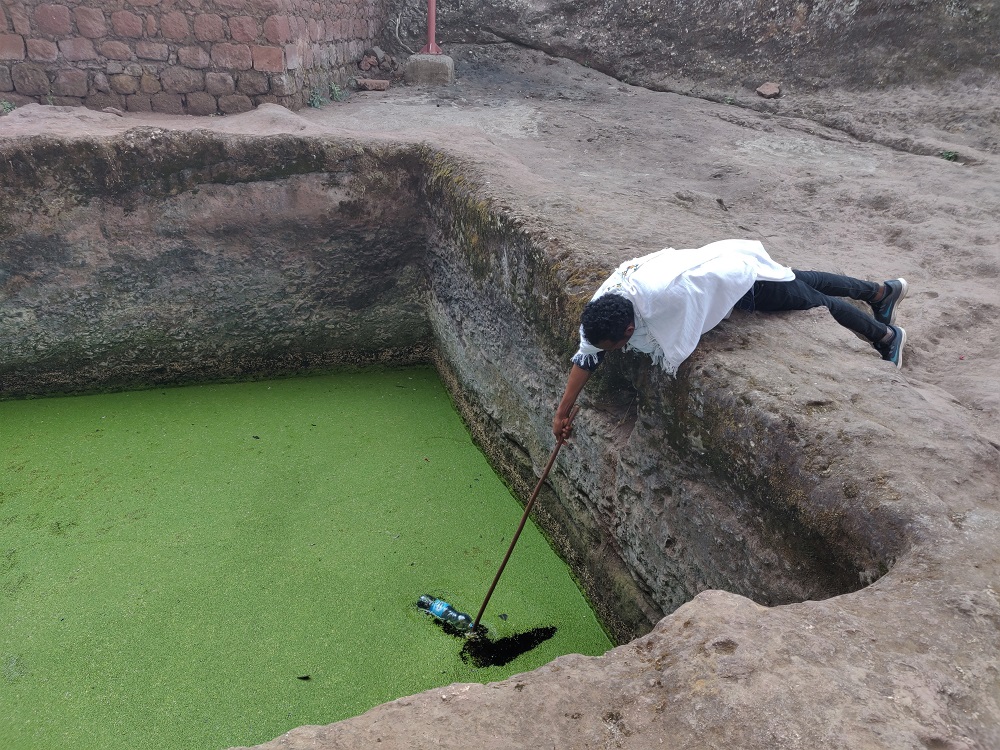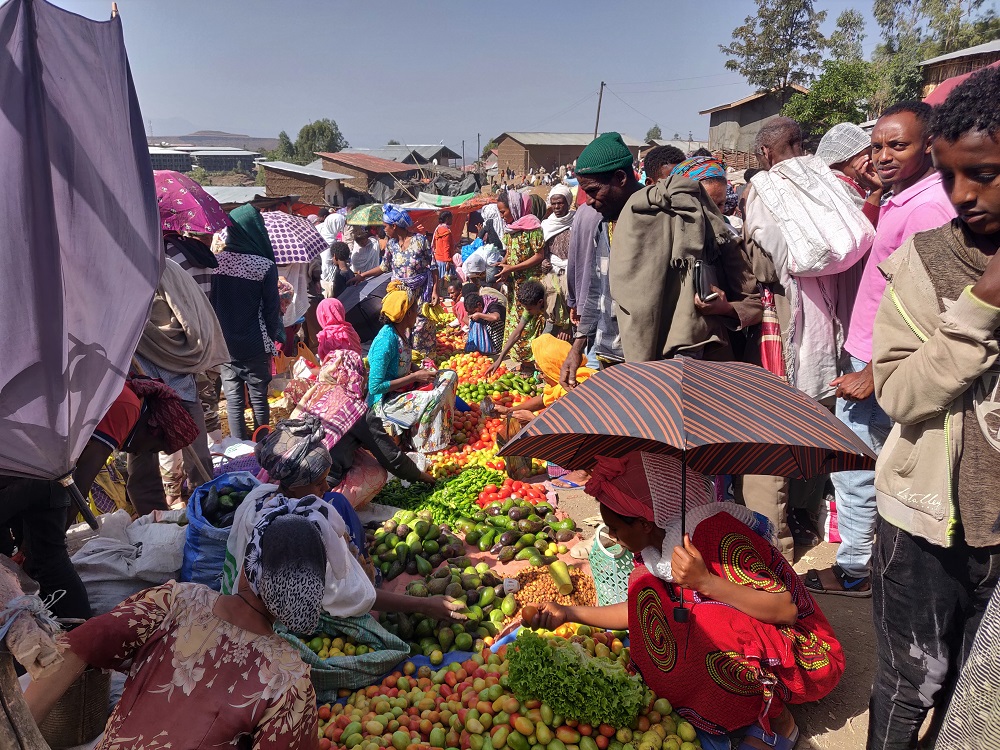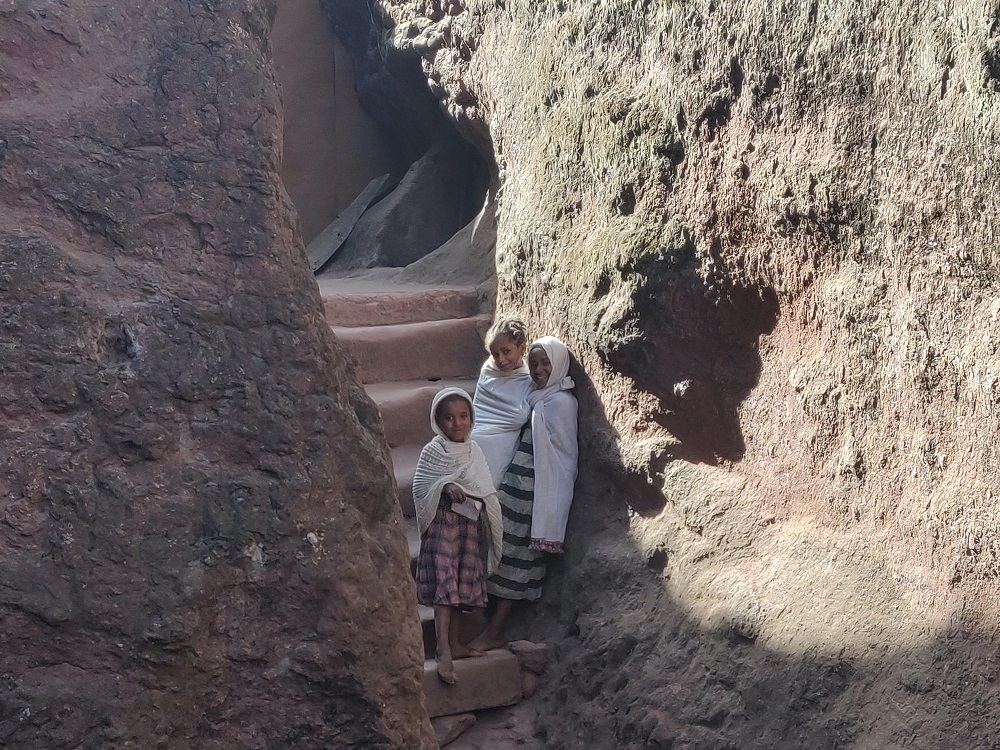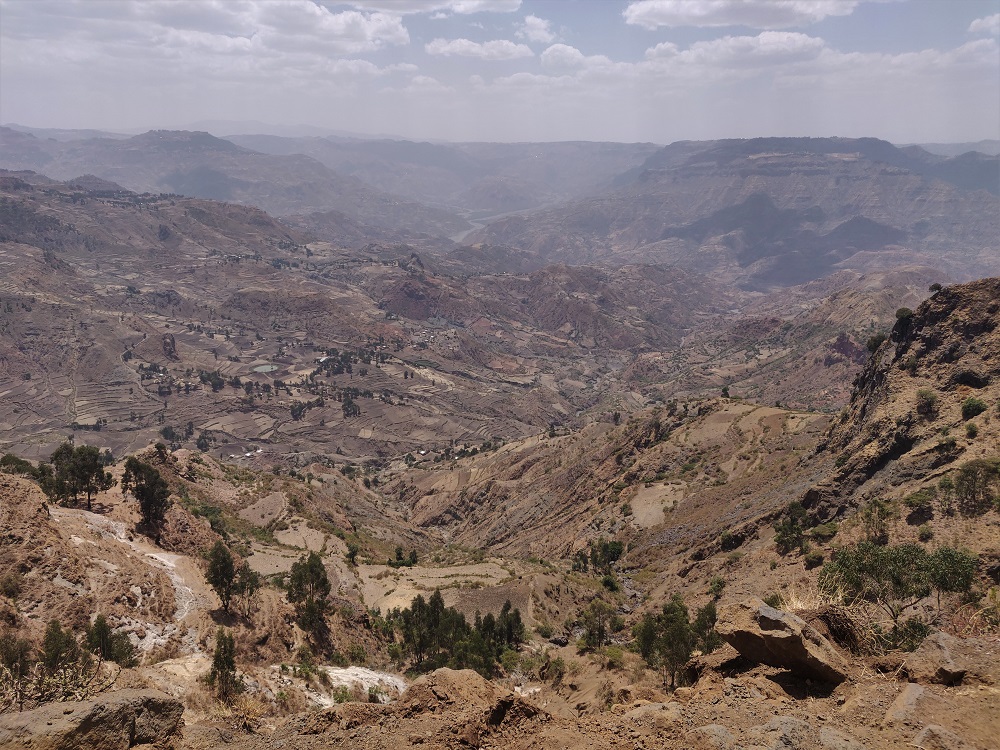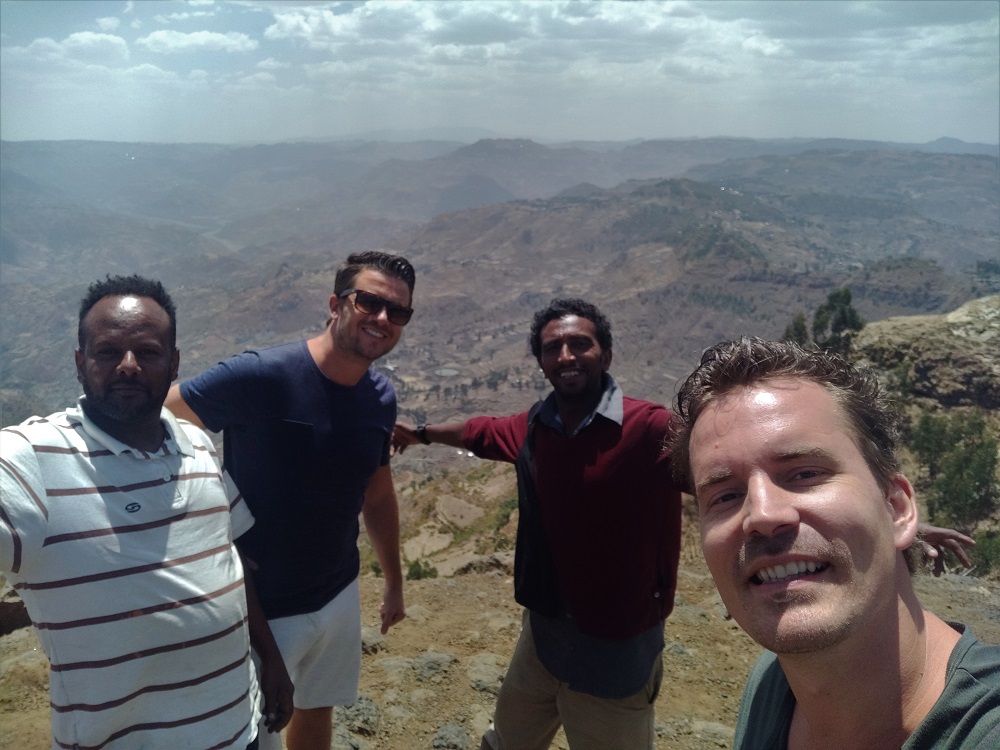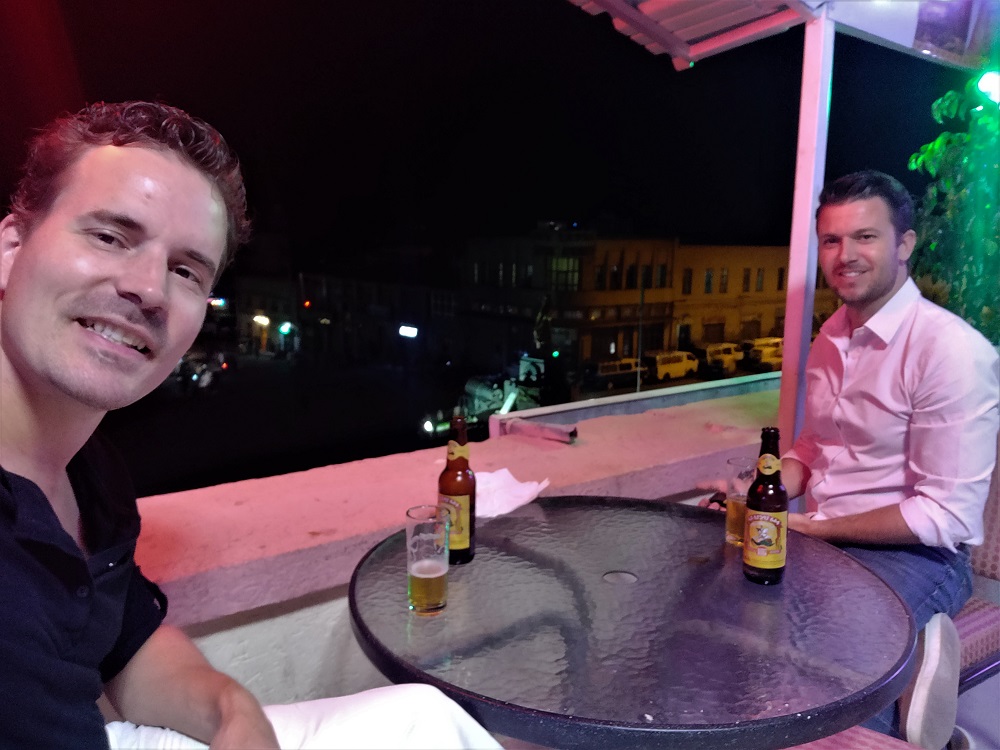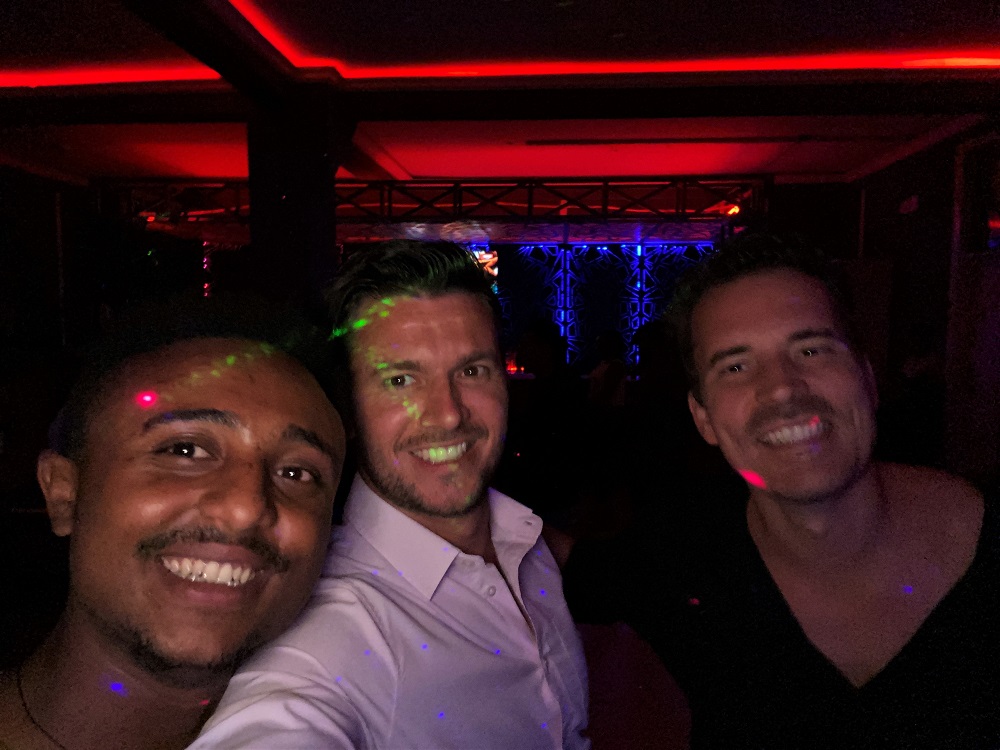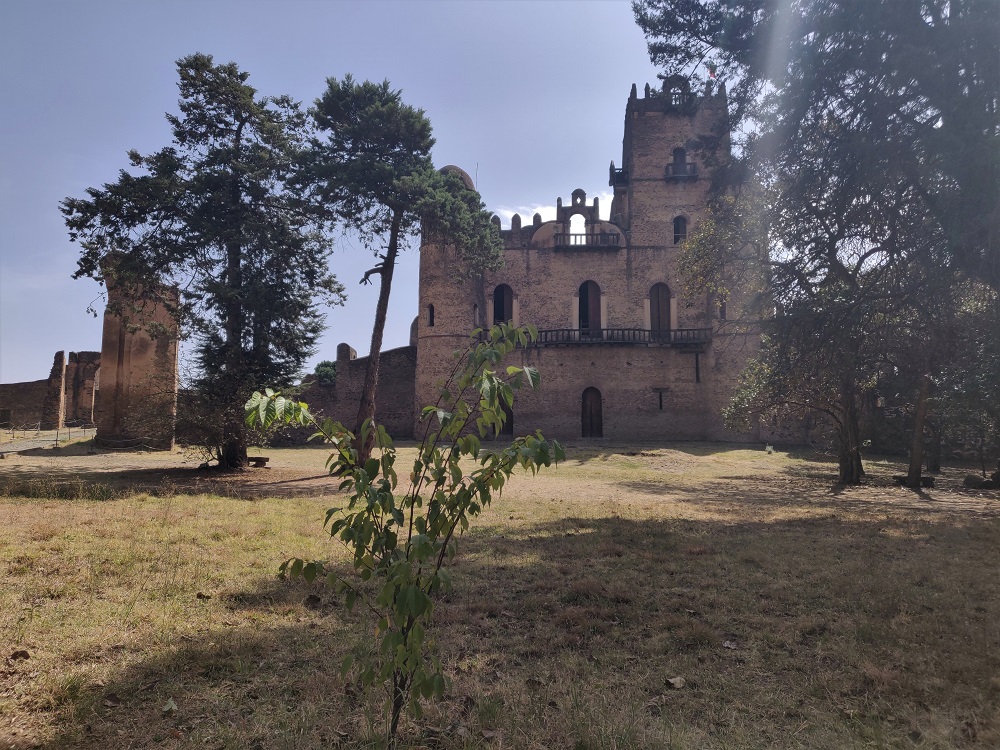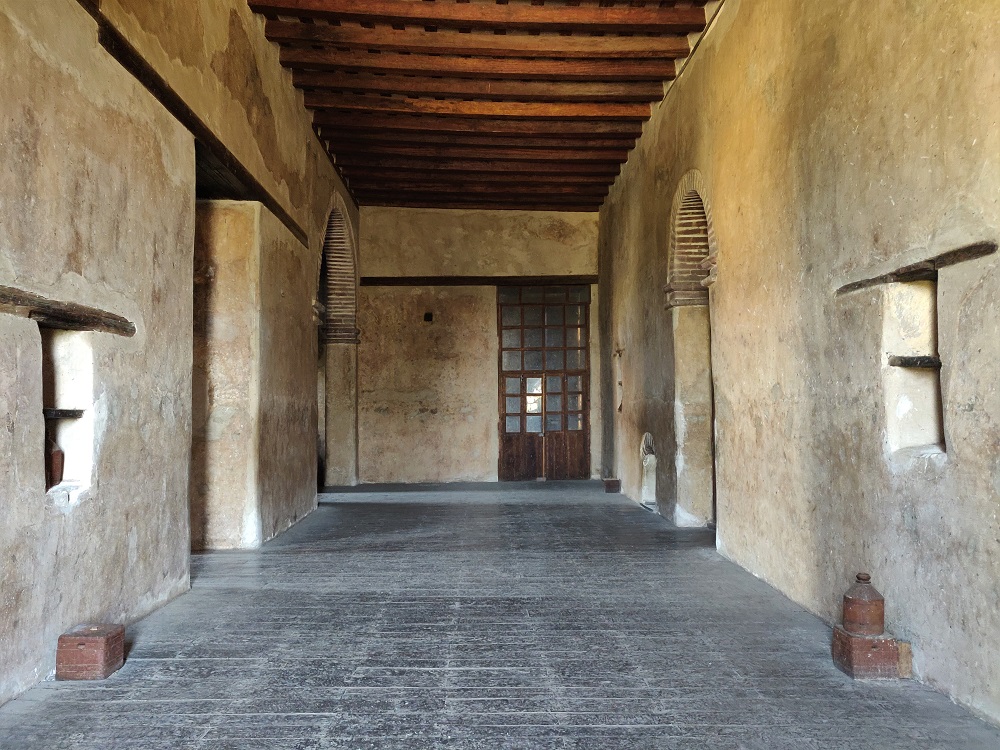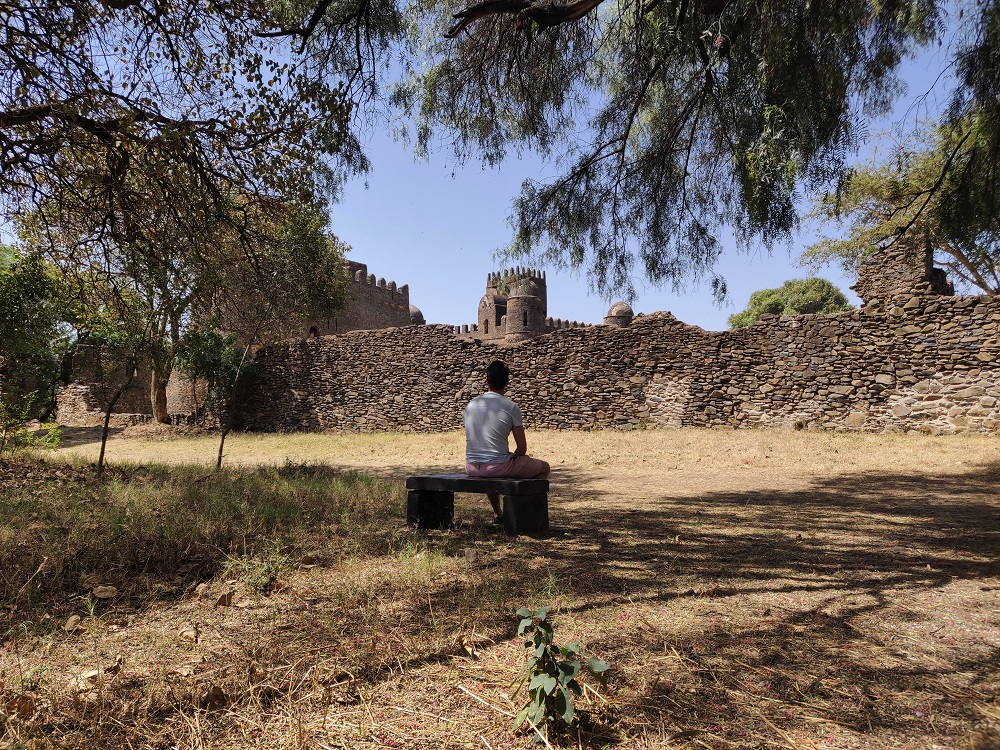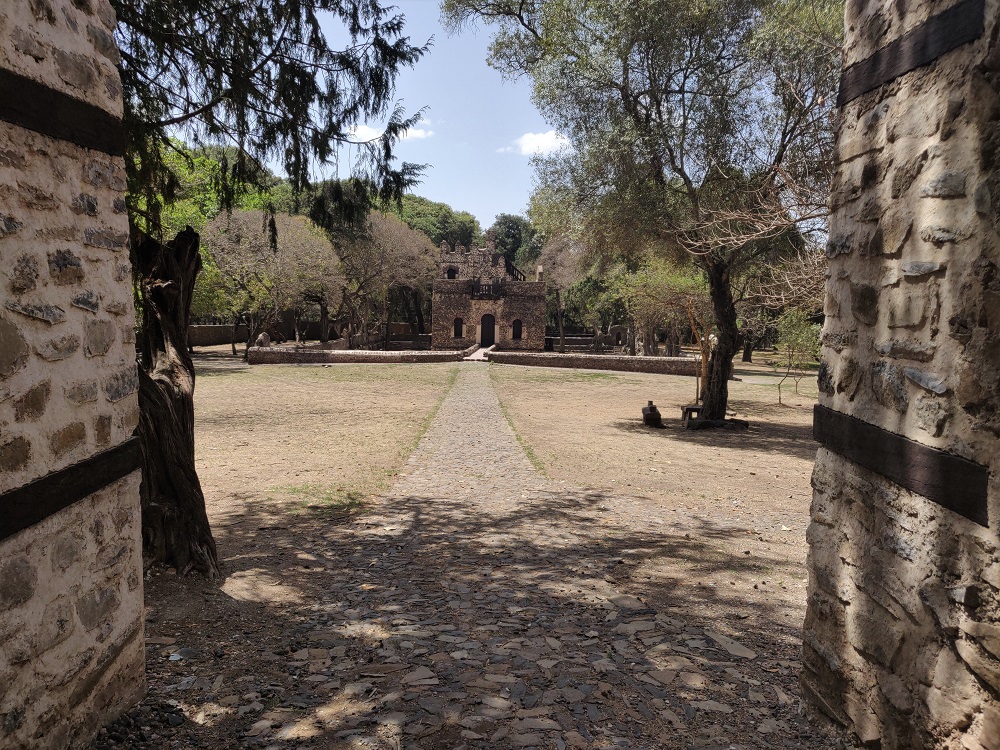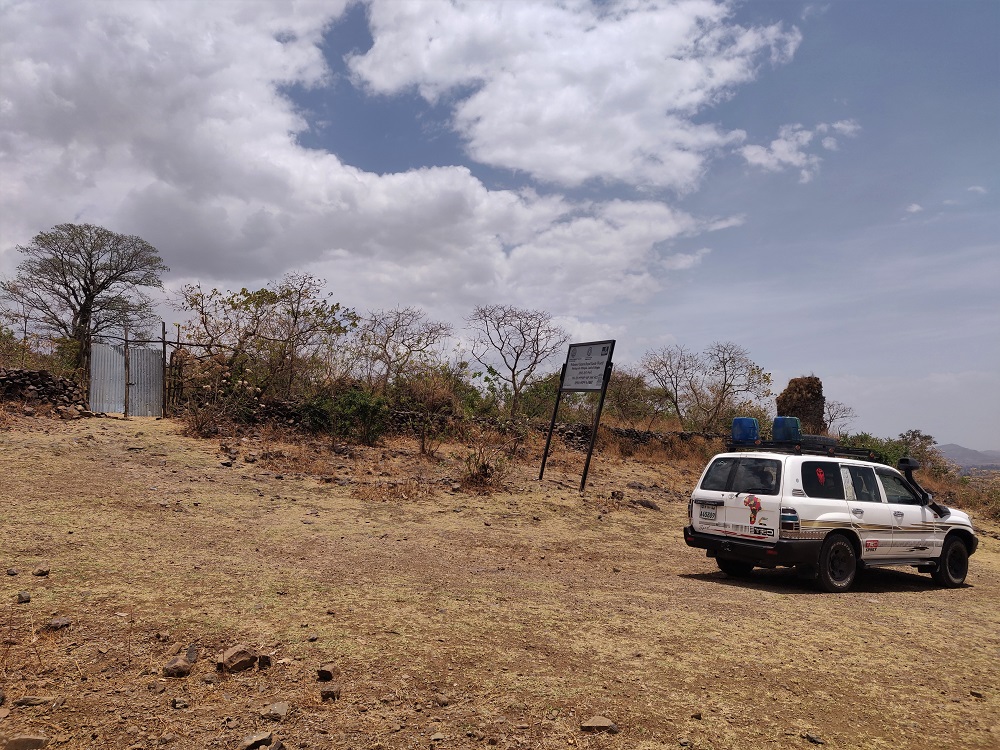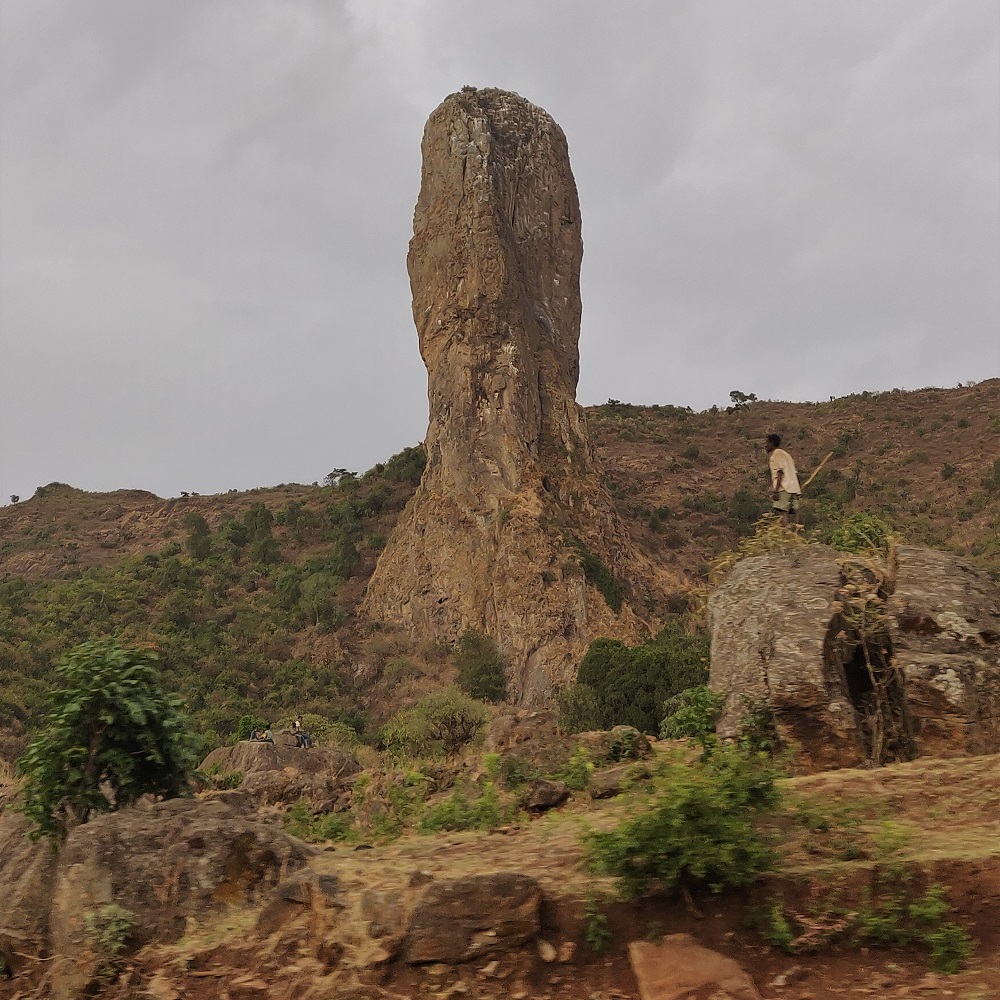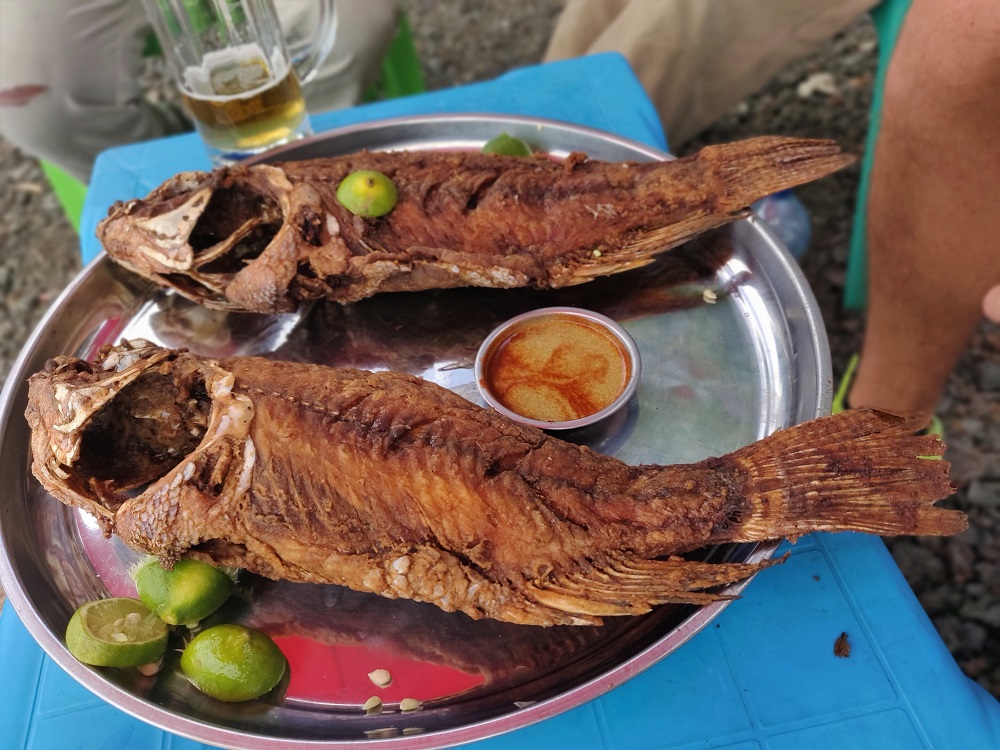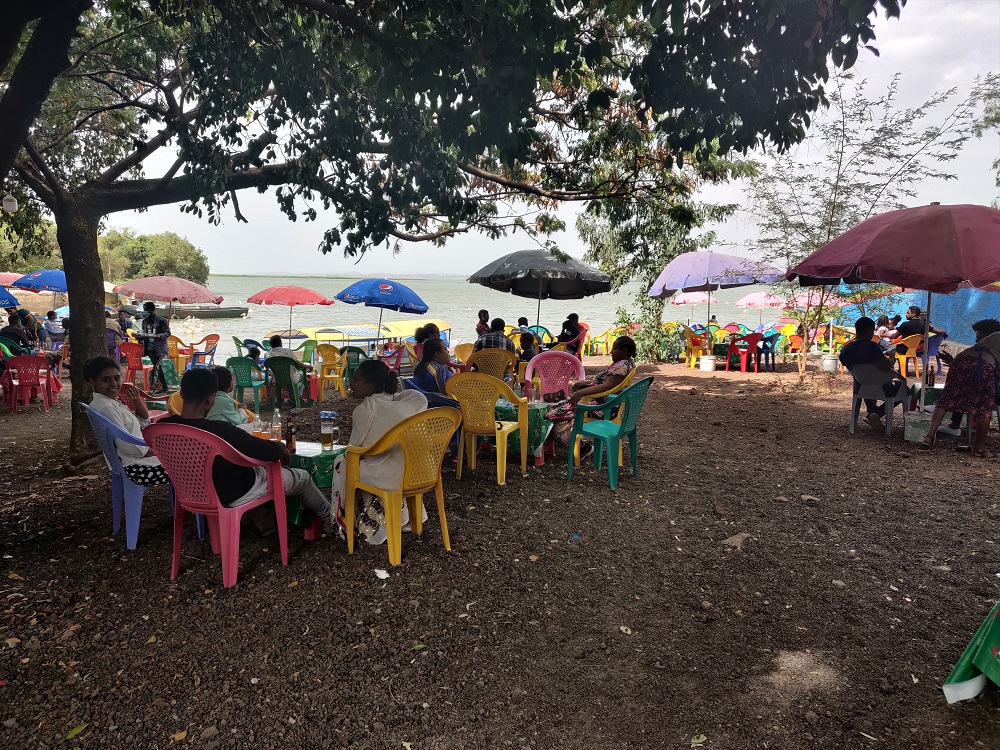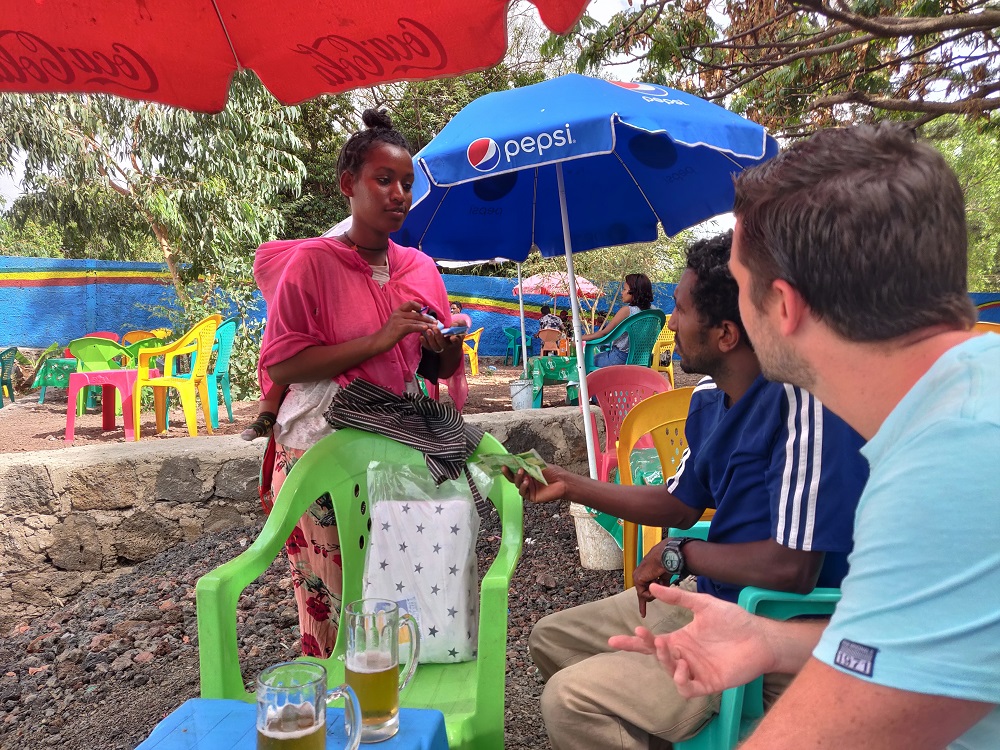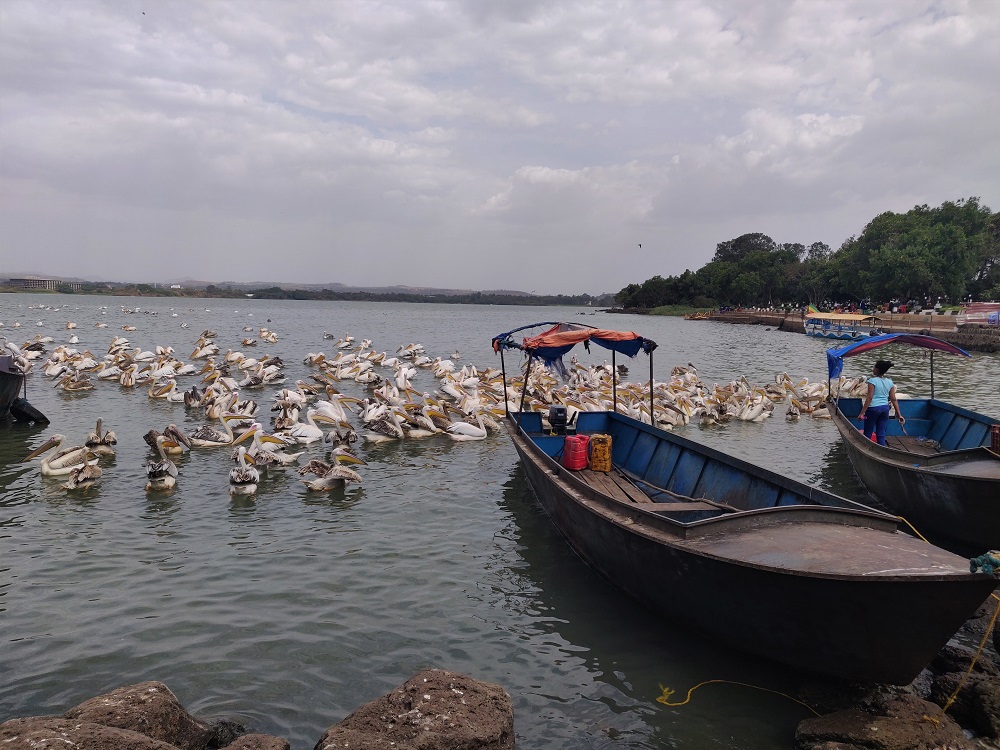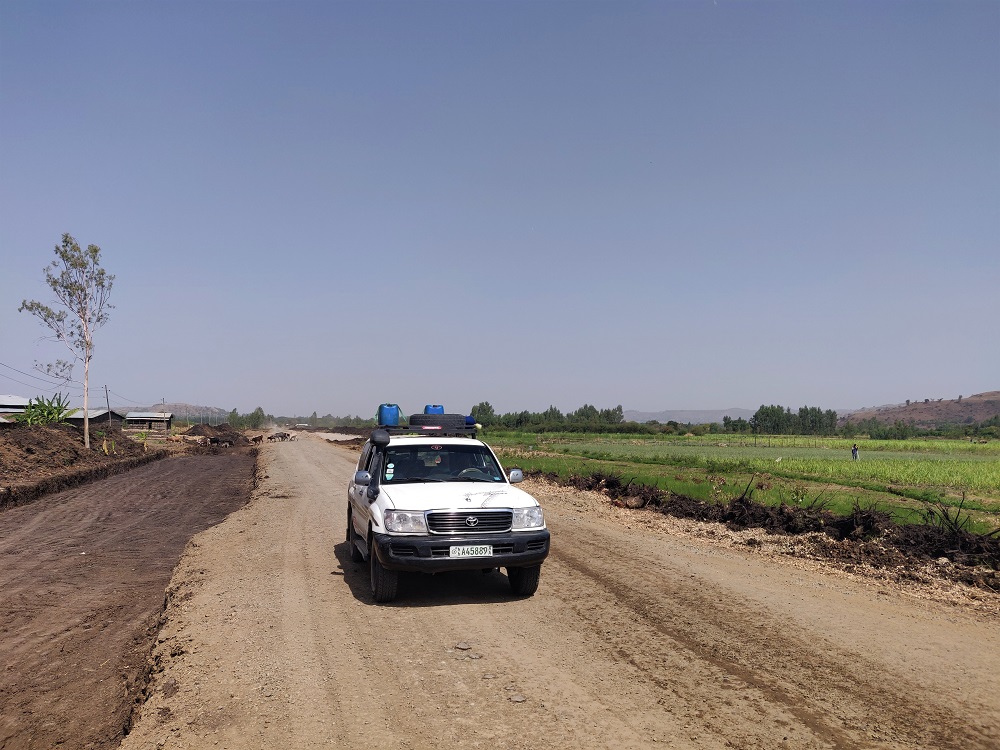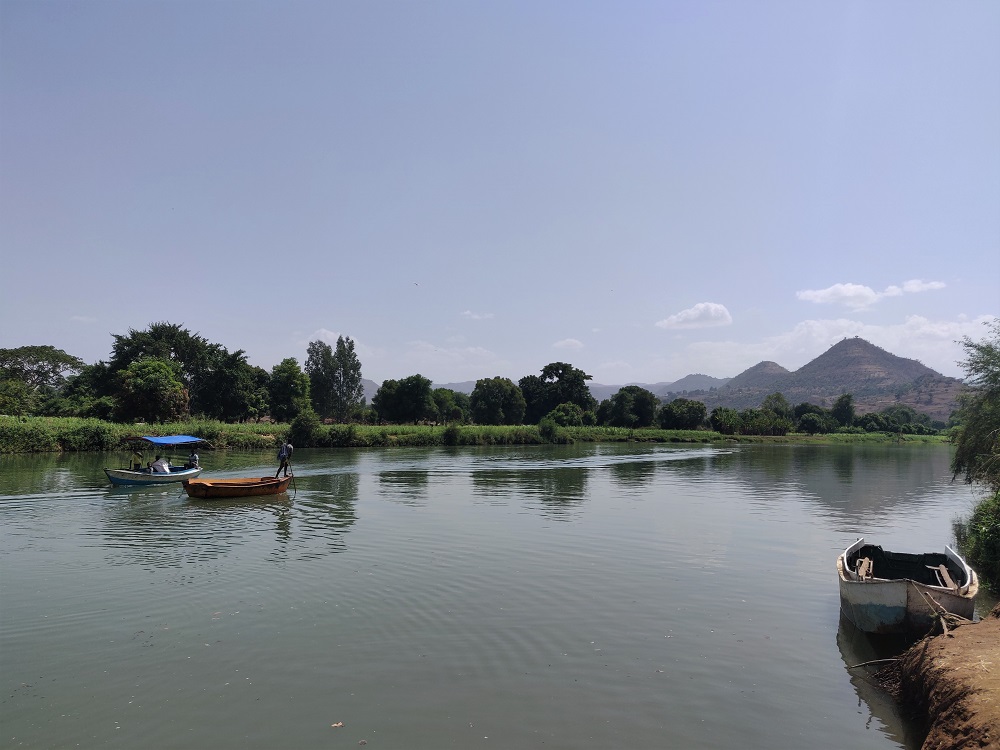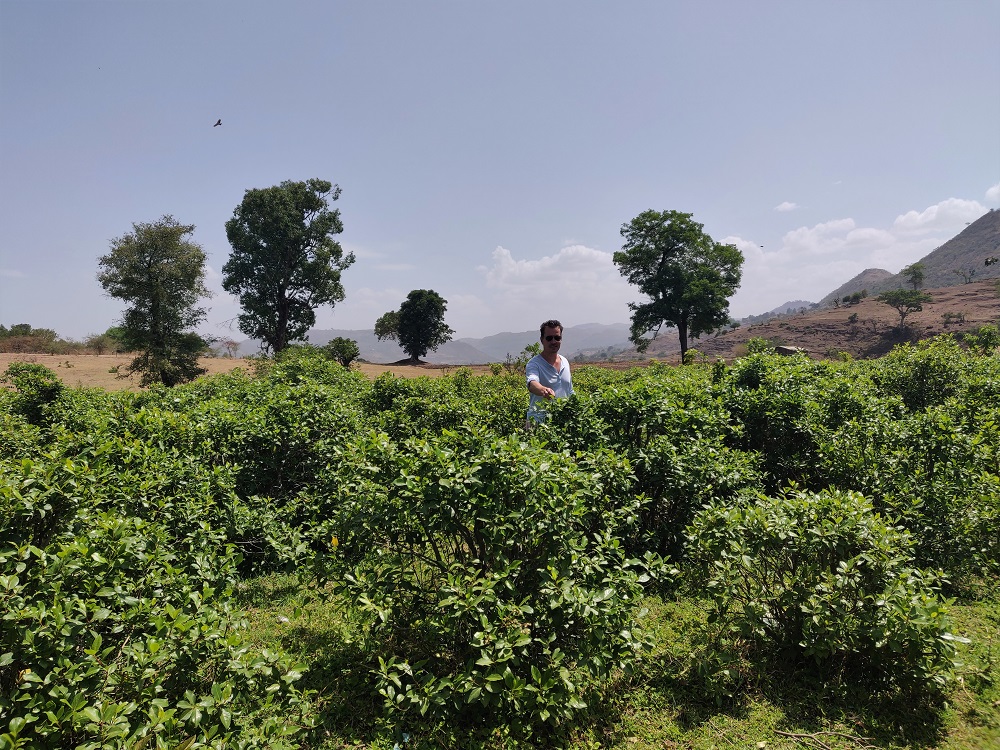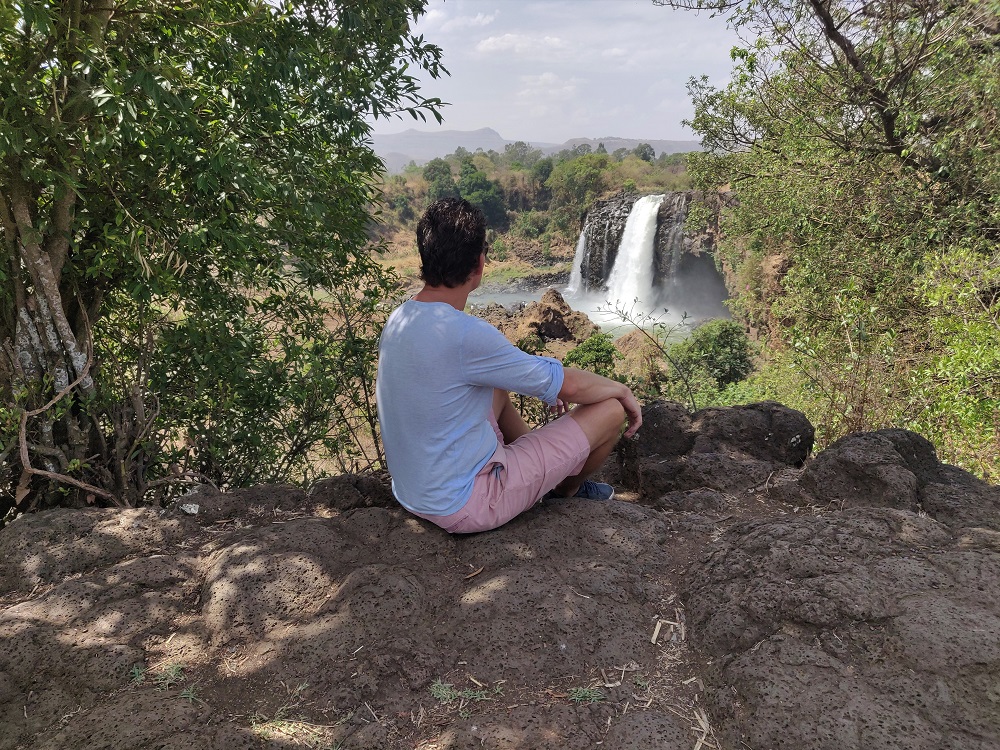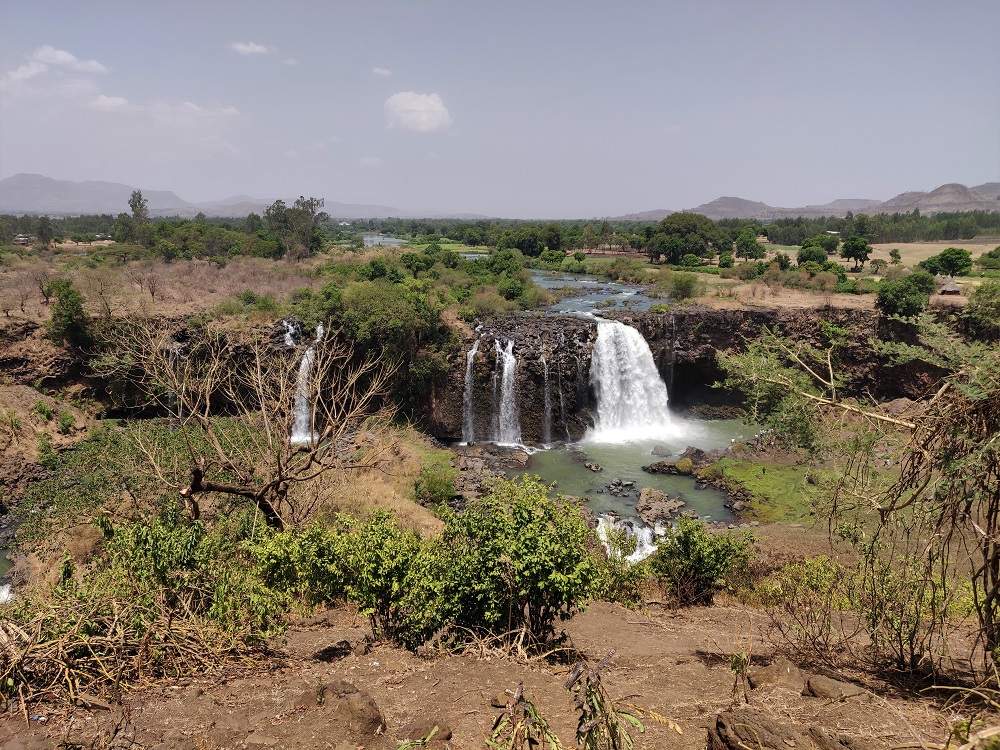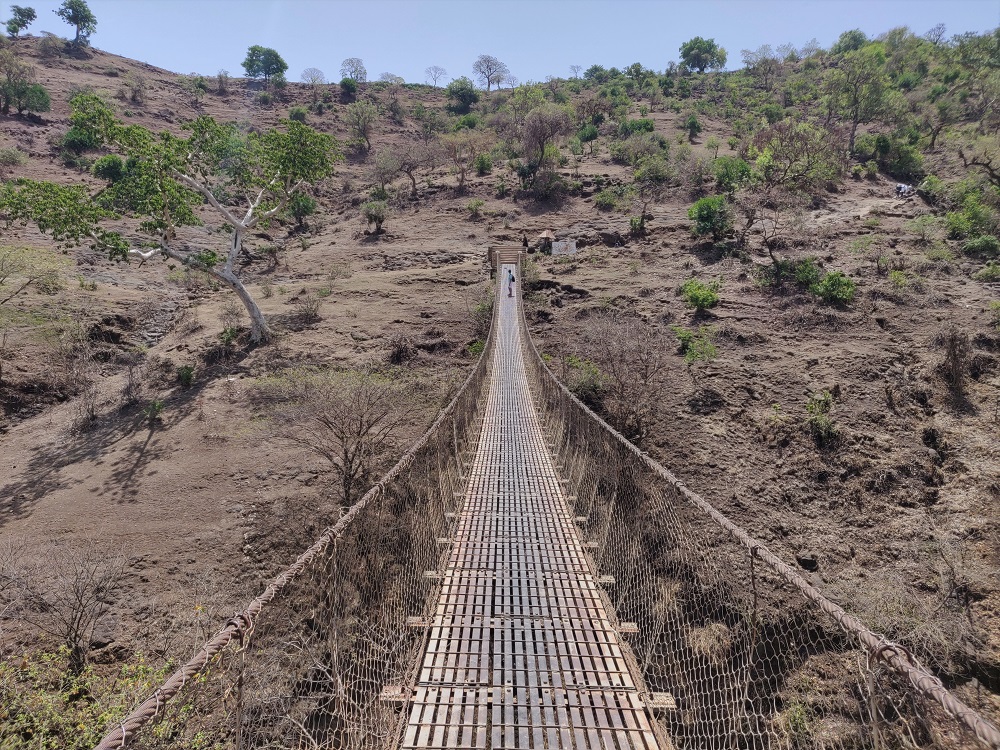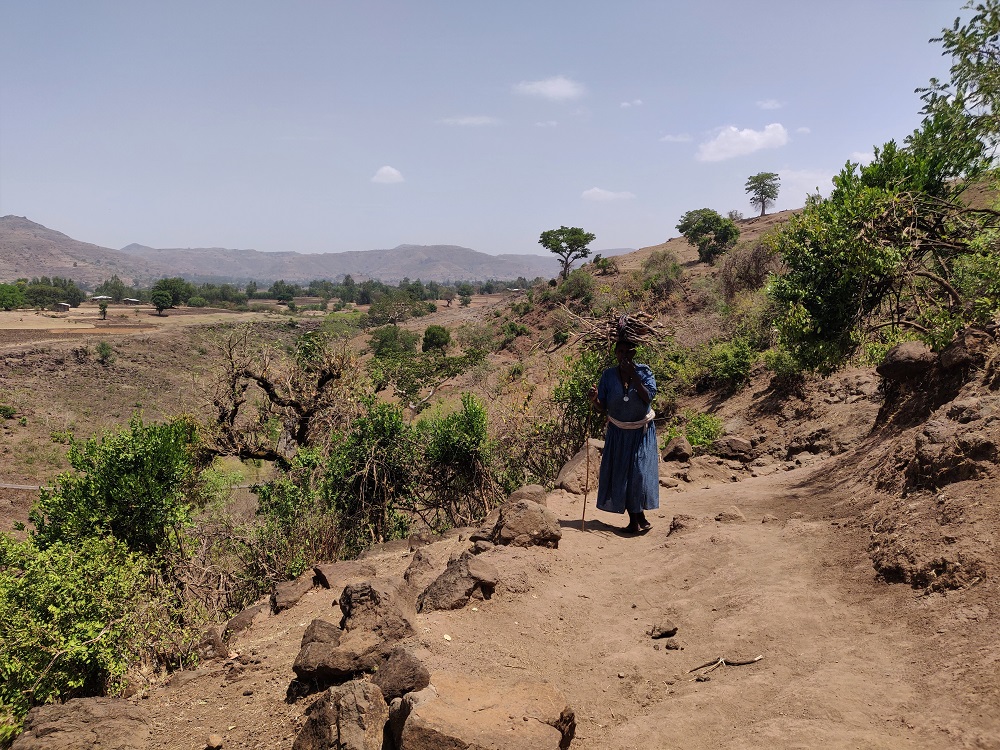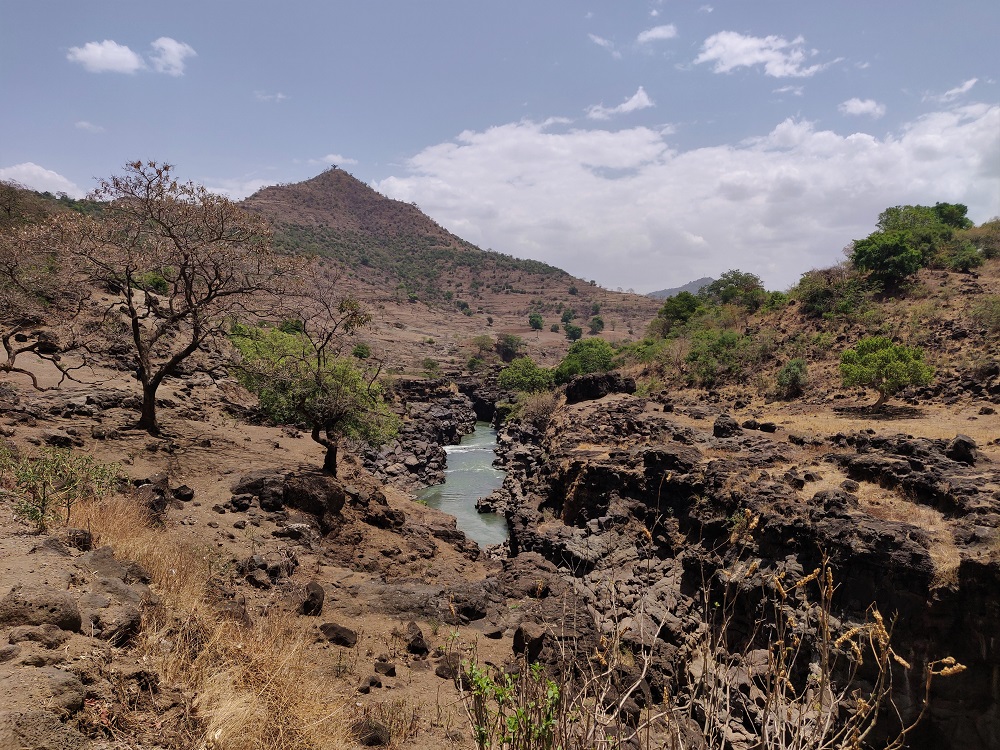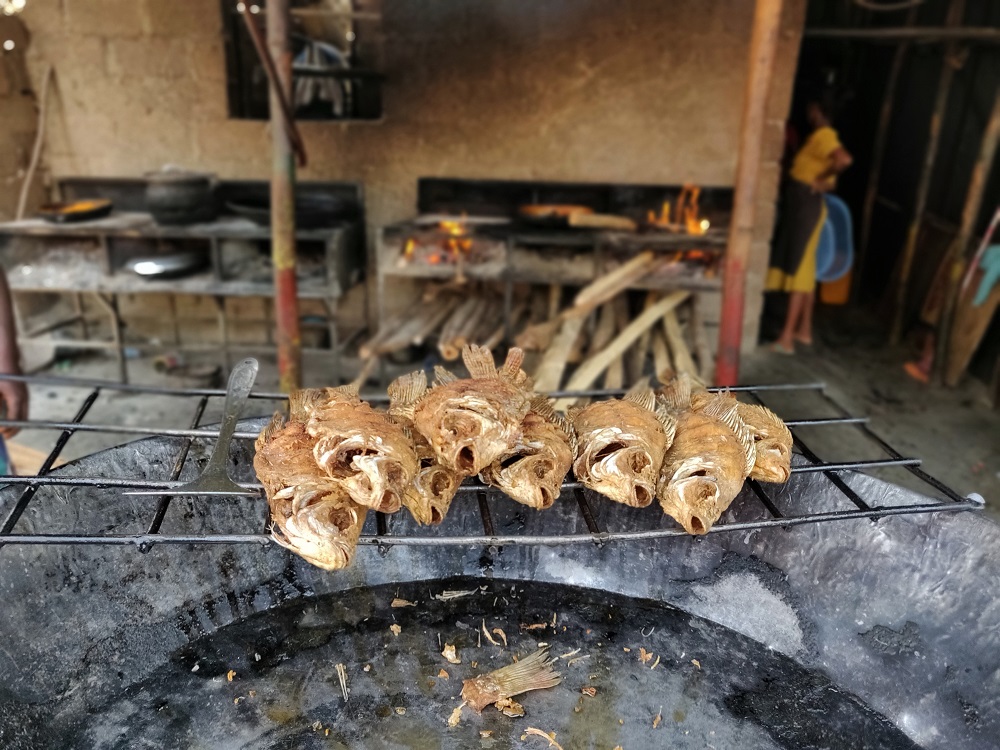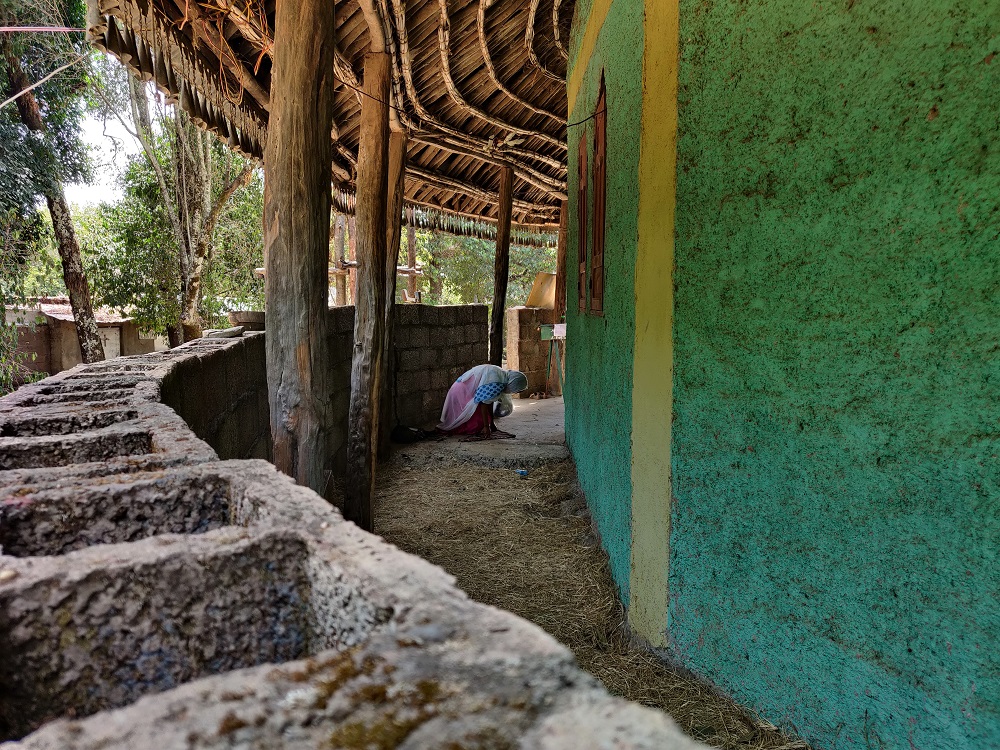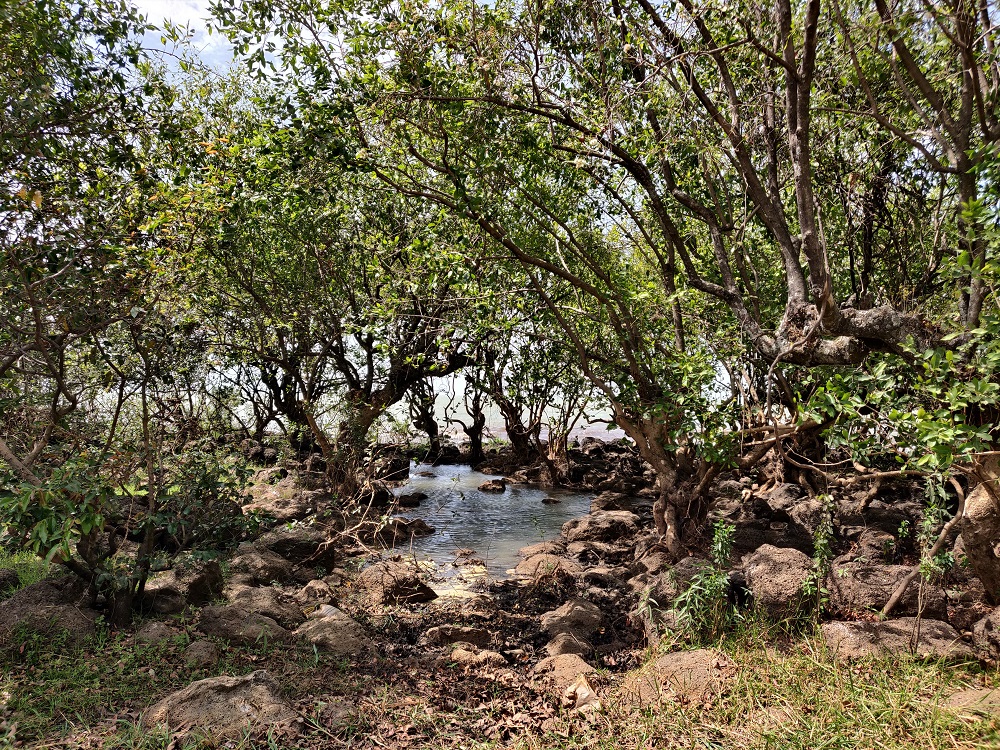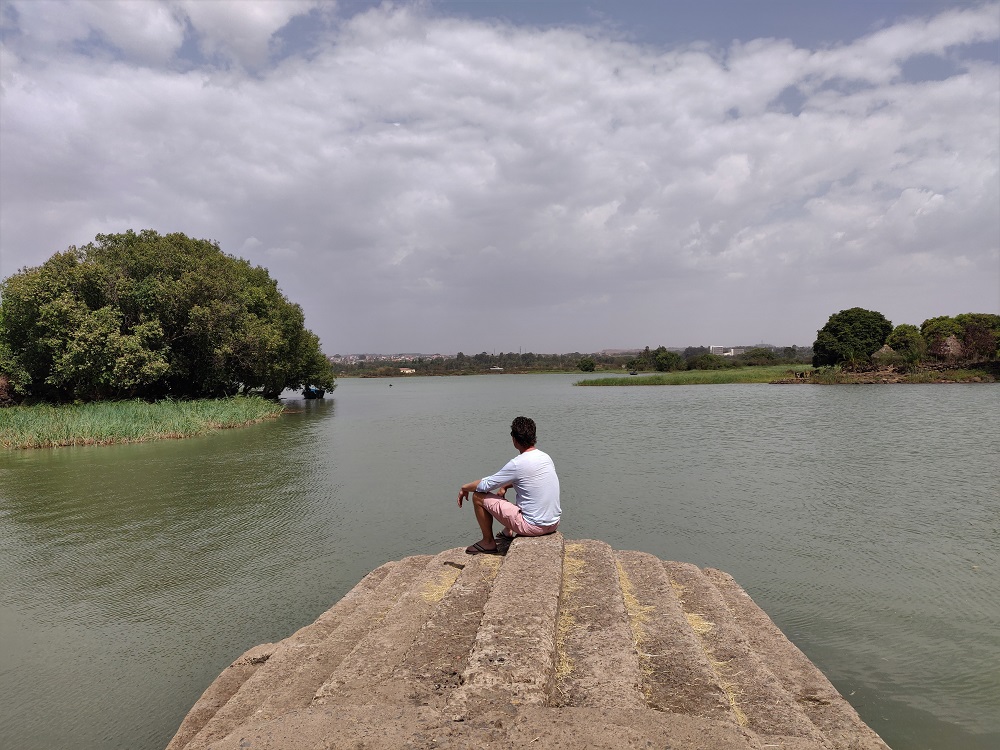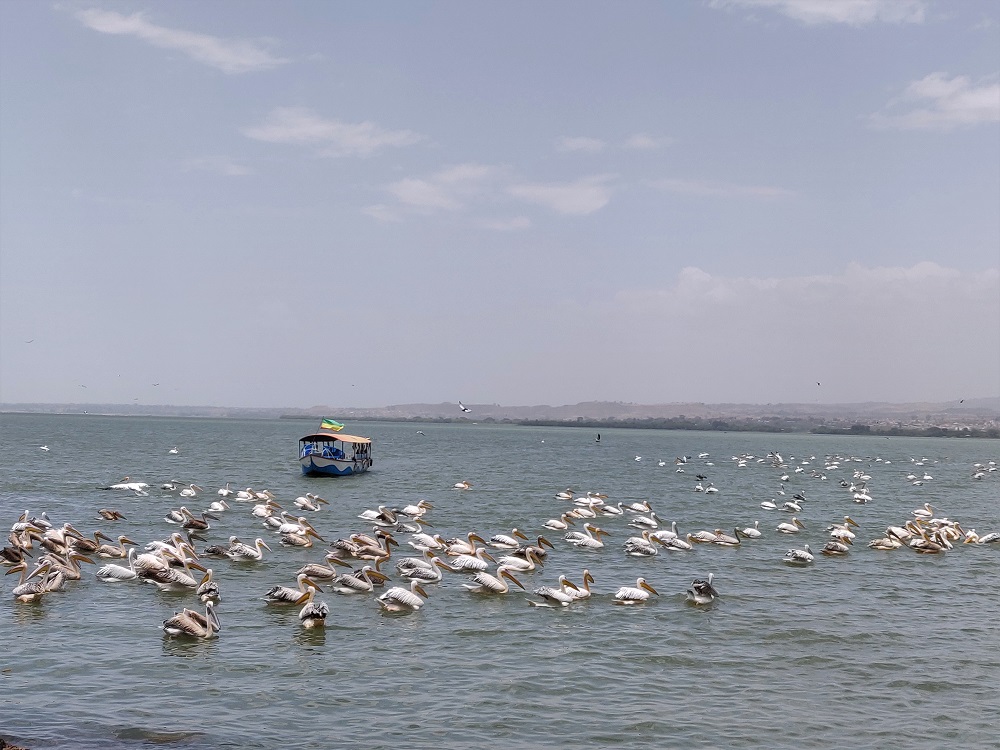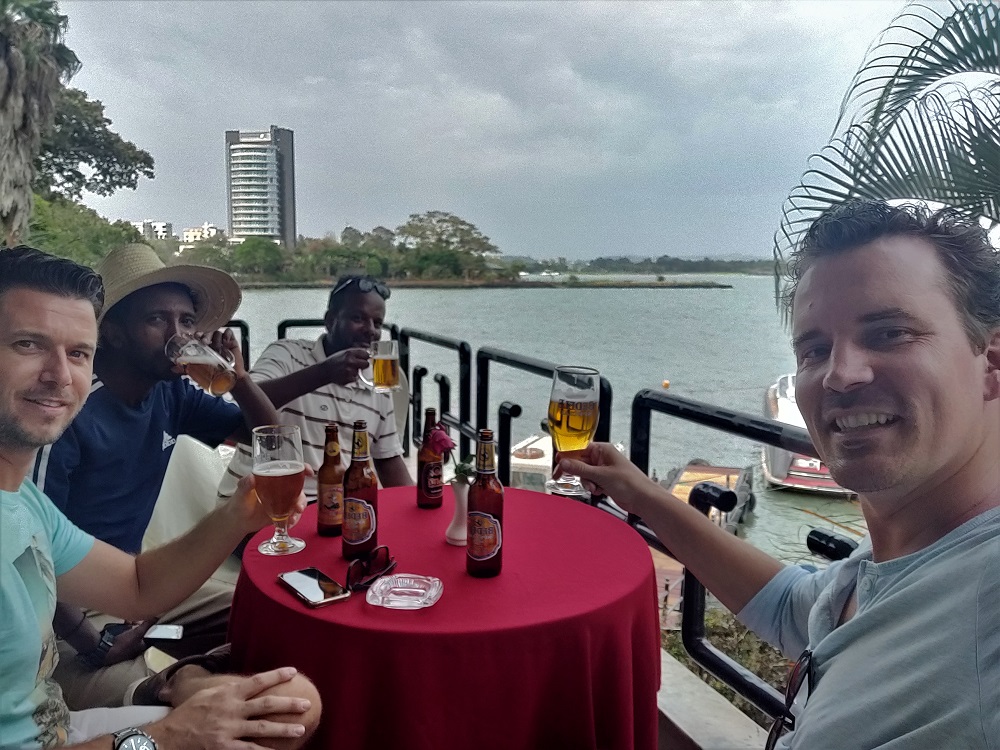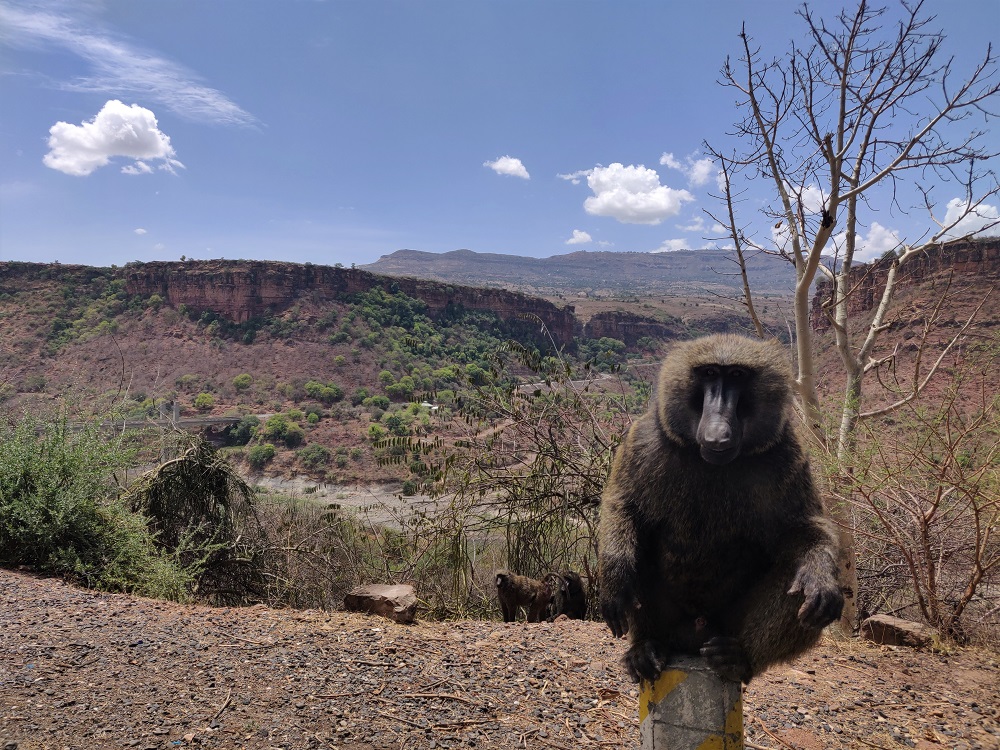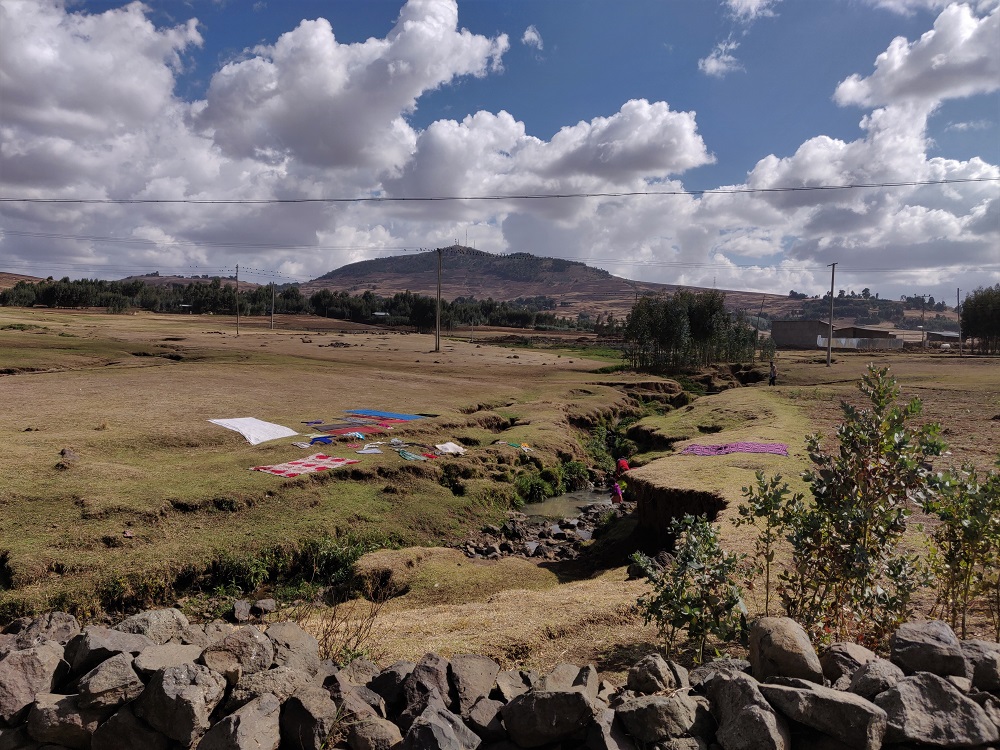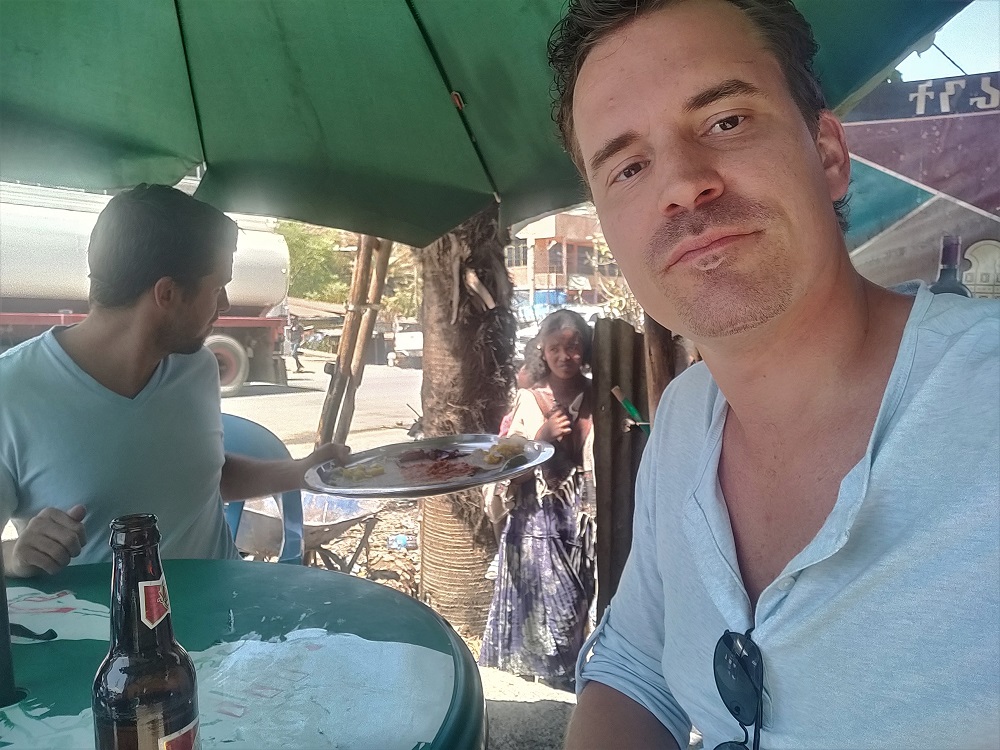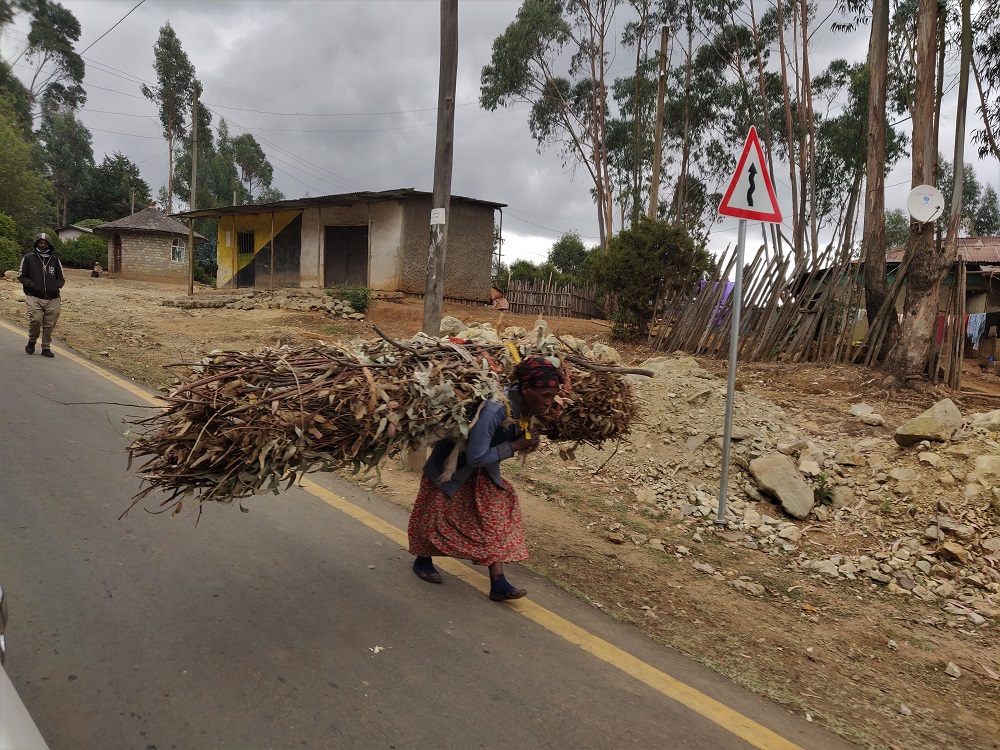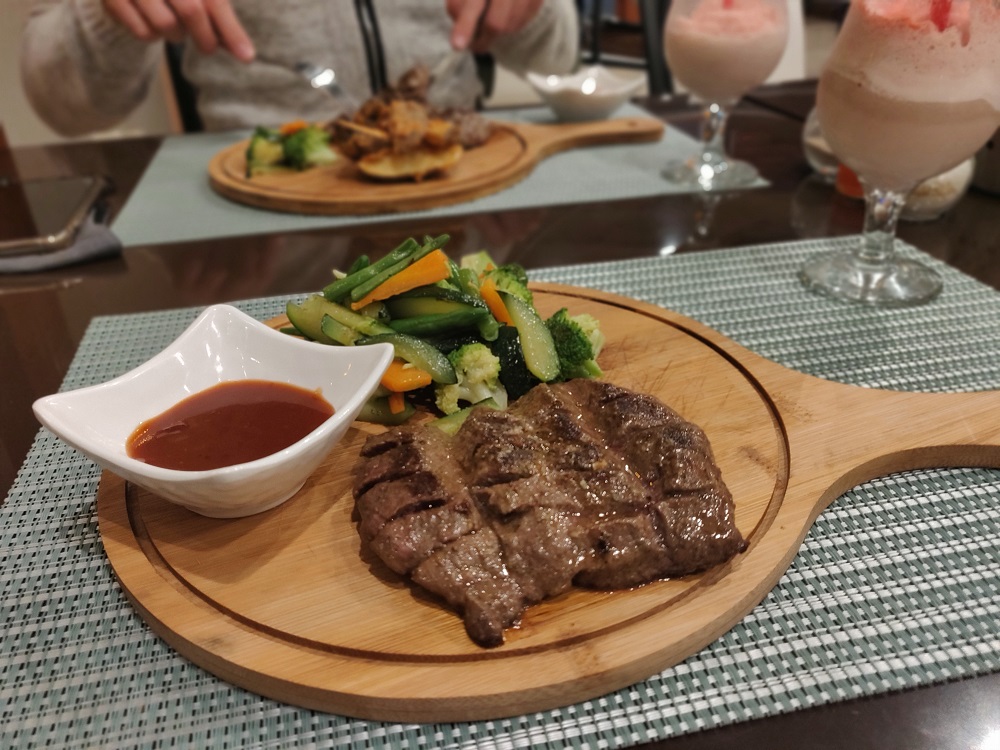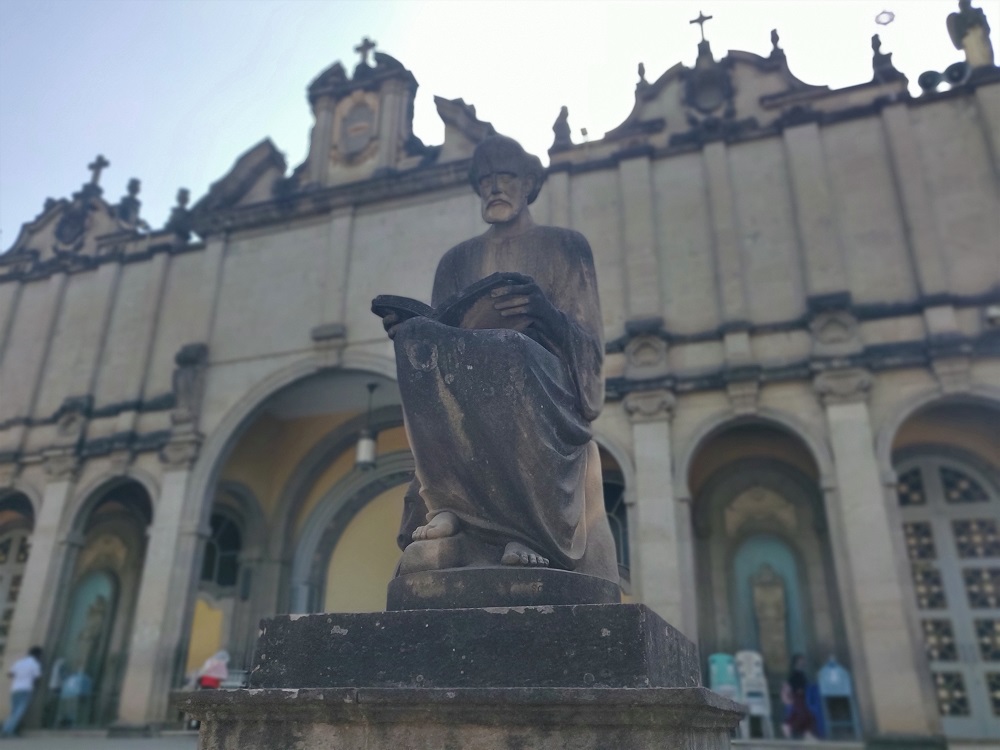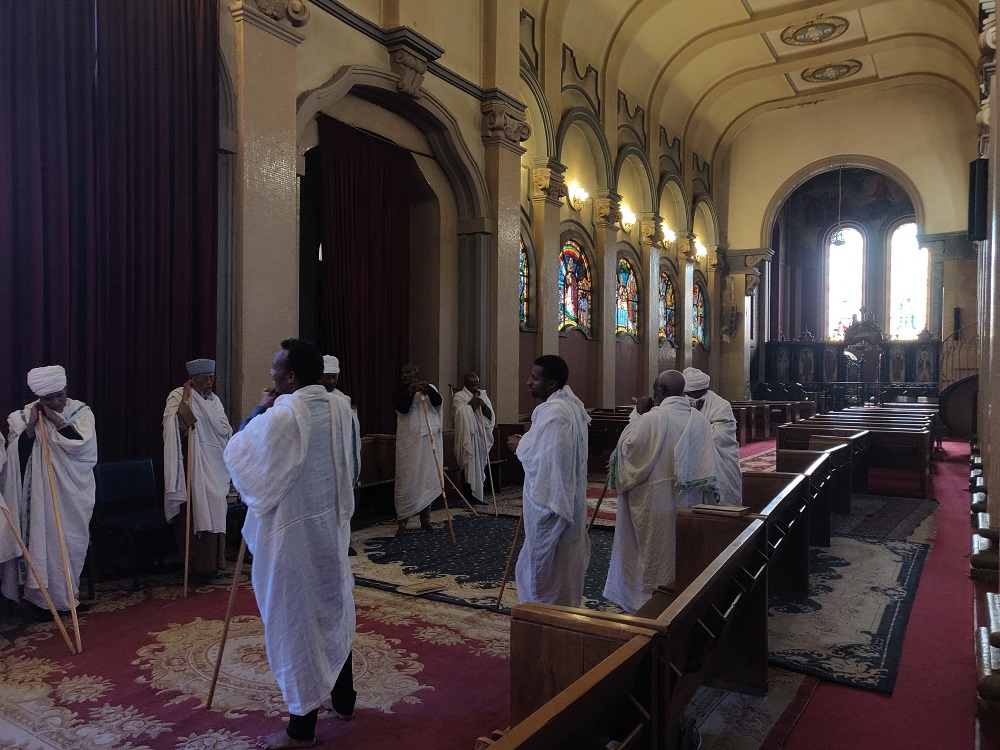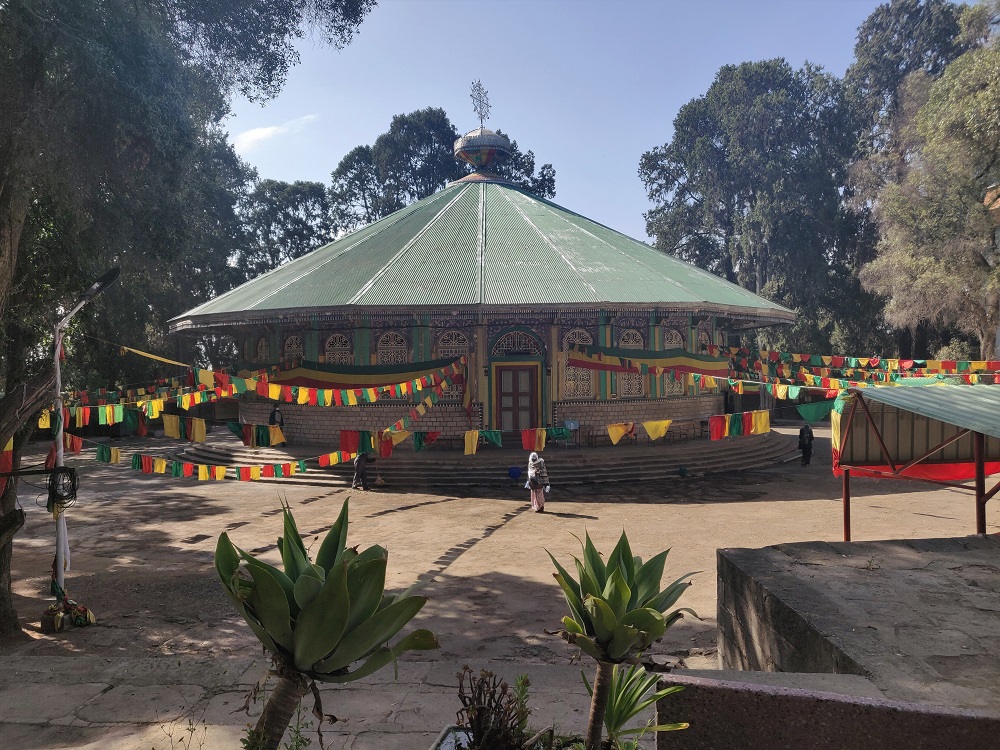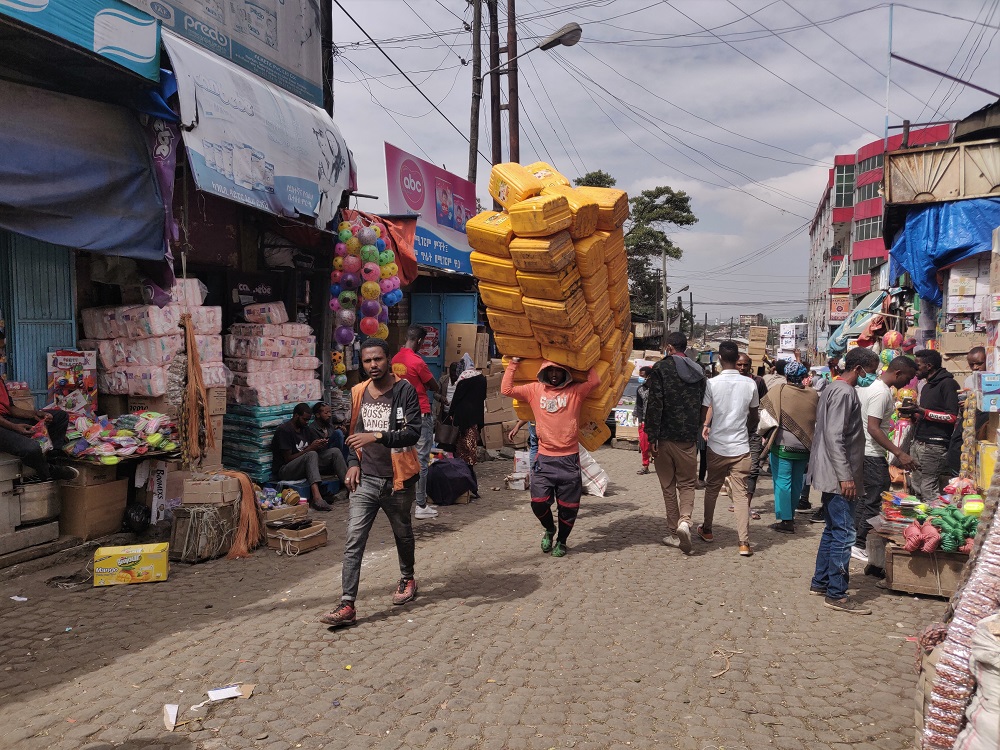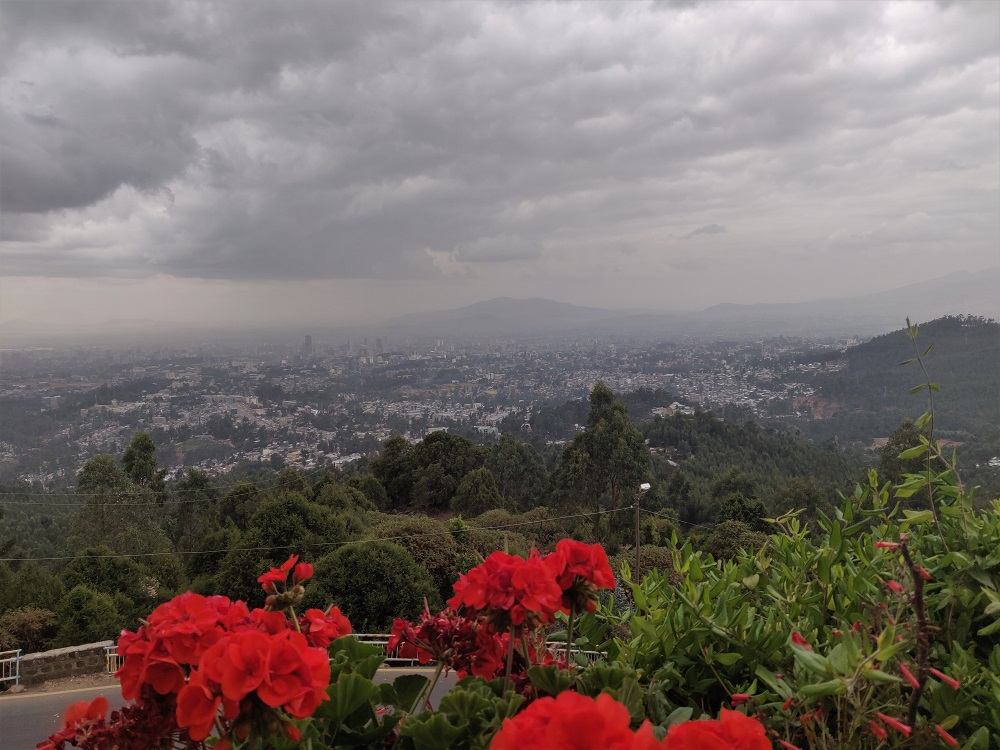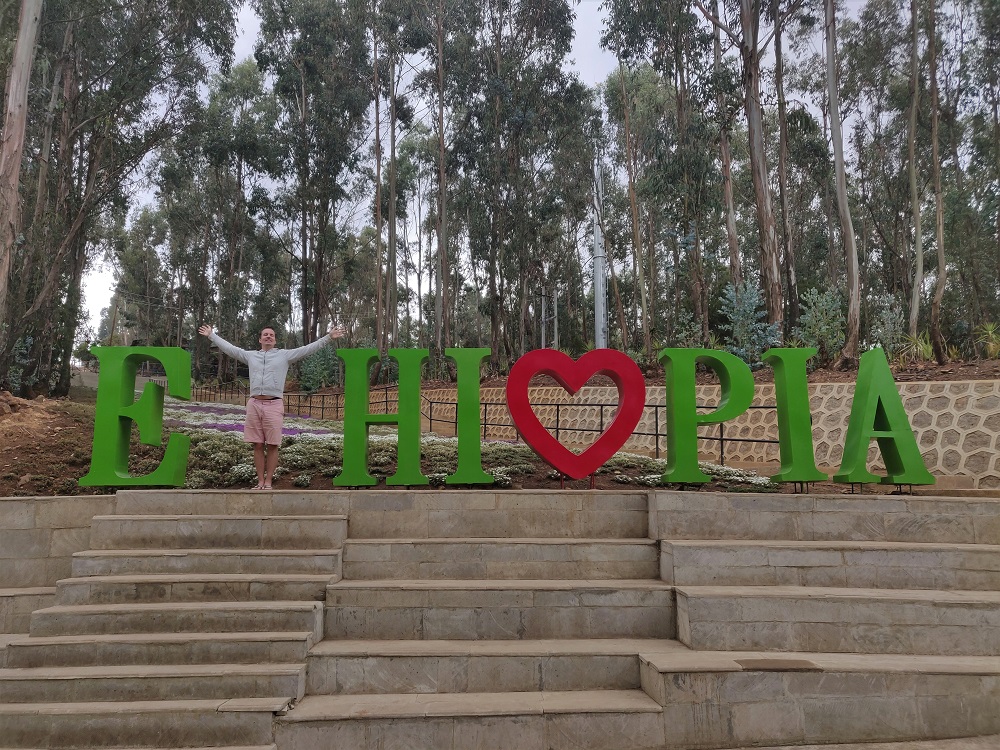Amazing Ethiopia – Lalibela, Gondar & Blue Nile Falls
Reading time: min
In this post, we will explore most of the key cultural and natural highlights of Ethiopia! Get ready for the rock-hewn churches of Lalibela, the forts and palaces of Gondar but also the beautiful Lake Tana and Blue Nile Falls. We end our amazing Ethiopian trip in the capital Addis Ababa… Please note that this is part 2 of my Ethiopian explorations and be sure to check out part 1 where we explore the alien-like Danakil Depression, as well as some general tips for traversing Ethiopia!…
Day 4 – Drive to Lalibela
After visiting Danakil, we drove from Semera all the way to Lalibela. The drive is ‘only’ about 400 km. However, we were in the car for approximately 8 hours. This mainly due to the poor road conditions and mountainous terrain. Luckily it is a beautiful drive! The scenery becomes greener and the valley vistas more spectacular with each kilometre!… We have definitely left the hot and harsh Danakil depression behind us…
Top Tip: Even in case you decide not to visit the Danakil depression, but start your trip in Lalibela, do still check the Danakil blog for my general Ethiopia tips. For example, it may be a good idea to fly to Lalibela from Addis Ababa, depending on your time and schedule.
The nicer vibe in the Amhara region
One striking difference we ‘felt’ was that as soon as you reach the Amhara region is that the people seem friendlier, they are waving and smiling, instead of demanding money, lifts or other gifts. Also, the countless annoying road check-points seem to almost disappear… A great change!…
However, in the state border region, we did come across one event that, at first, looked like a flat tire accident. A truck was seemingly unnecessarily blocking the road, but later we found out that the tire was shot by bandits and the truck driver was robbed. The following hour we were a bit more alert when driving, but while pursuing our journey all seemed safe (also no sign of bandits when asking some upcoming drivers).
Lalibela’s beautiful nature
Soon the mountainous scenery becomes really impressive! and we made various stops to take in the beauty… Unfortunately, the nicer the scenery becomes the worse the road gets… the upside of driving slow is you will have ample opportunity to take in the beauty…
When arriving in Lalibela, it is clearly a nicer, richer, quaint, more touristy town with cobblestone streets and many hotels and restaurants… A stark contrast to the ‘settlements’ in Danakil and other towns in Eastern Ethiopia we had seen thus far.
We were the only guests in the entire hotel, and one of the very few in Lalibela as a whole for that matter. Upon arrival, we enjoyed the sunset from our rooftop terrace…
We decided to go for a massage… Warning, not a success! Unless you like to just get stroked a bit and get eaten by mosquitoes while you are at it…
Afterwards, we went for dinner at Kana Restaurant. They just closed, but the friendly owner (re)opened just for us! We had a great chat with him and he also suggested a guide for the next morning to explore the rock-hewn churches…
Day 5 – The amazing rock-hewn churches of Lalibela
The next morning we were ready to explore the famous rock-hewn churches of Lalibela! Likely THE cultural highlight of Ethiopia, as well as one of Africa’s cultural top sights! We arranged a very knowledgeable guide via our friendly restaurant owner from the evening before.
The 11 medieval monolithic cave churches were constructed to build a ‘New Jerusalem’ in the 13th century. They are still an important place of pilgrimage and devotion for Ethiopian Orthodox Christians. These churches are not built in a traditional way but are hewn out of the volcanic rock, after which all windows, doors and tunnels were further chiselled out. The churches are essentially 1 piece, just amazing! Especially considering this was planned and executed over 9 centuries ago!…
The rock-hewn churches are divided into 3 clusters and I advise you to visit all of them as all churches are different and beautiful in their own way.
Cluster 1 – Baite Medhani Alem and Biete Mariam
This cluster has 5 churches, of which Biete Medhani Alem (House of the Saviour of the World) is believed to be the largest monolithic church in the world. Together with Biete Mariam (House of Mary), they are the key buildings of this cluster.
We visited during the orthodox Easter fasting period and arrived on a Saturday morning while an Easter mass was still going on, with a large number of worshippers and religious activity taking place. Lucky timing!…
The pond next to Biete Mariam is said to have healing powers for women who struggle with fertility problems. Pilgrims come and take water from the pool to take home for themselves or to their loved ones in need.
Cluster 2 – The famous Biete Ghiorgis or St George Church
After visiting the first cluster, it is a short walk to the separate church, Biete Giorgis (House of St. George). It is isolated from the others but connected by a system of trenches. This is the most famous church because it is carved out in the form of a cross. It is mostly the outside that is spectacular, the inside is less detailed than others.
Lalibela’s Saturday Market
Before heading to the 3rd cluster we made a stroll over the crowded Saturday market. People from all around come to sell and buy their local produce here… (no signs or worries of Covid-19 here)
Top Tip: Visit Lalibela on a Saturday (morning) as you can witness both the morning mass at the churches and complete it with a nice stroll over the large Saturday market as well.
Cluster 3 – Biete Amanuel and Biete Gabriel Raphael
This cluster houses the other 5 churches, where my favourite church of this cluster would be Biete Amanuel (House of Emmanuel) with its amazing striped carvings on the outside. Followed by the impressive 2-story Biete Gabriel Raphael (House of Gabriel Raphael). There is a 35-meter pitch-black tunnel connecting the 2 churches (ask your guide to walk this way). It is said to represent hell and, according to local tradition, it should be walked without any light – mind your head!
Drive to Gondar
After visiting Lalibela’s churches and market, it was time for our daily dose of driving hours!… We jumped into the car and headed for Gondar. This time with our new drivers (arranged via the family of friends in Dubai).
The quality of the road was better, but still with the usual ‘Ethiopian traffic’ delays. The 6.5-hour drive turned into an 8-hour drive and we arrived in Gondar just after sunset.
Gondar nightlife
Given it was Saturday night we decided to explore the nightlife of Gondar, which proved to be harder to find than expected… Despite the massive university campus (with around 25.000 students) it was very quiet. Perhaps due to Easter fasting or an Easter break? Anyway, after browsing the street for a while we found a restaurant for dinner and afterwards we met some students who took us to a bar and later a club. Good to practice their English and we took the liberty of paying. Then you realize again how cheap Ethiopia is again; a full night of drinking with 5 people came to around 25USD in total.
We did not make it too late though, as the next day we had a busy schedule (again)…
Day 6 – Gondar and Bahir Dar
We started the day by exploring Gondar’s key site is Fassil Gebbi. The ground houses various buildings as Gondar Fort, and Gondar Palaces. What makes this site particularly interesting is that Ethiopia was never colonized as one of the few places in Africa. Italy had tried once, but failed and ultimately lead to the nation of Eritrea. Still, without any or very limited influence, the Ethiopians constructed their important forts and palaces in a very similar way as the Europeans did.
We did not take a guided tour here, as we liked to stroll around ourselves and guided tours usually tend to take a bit more time than we liked to spend. Moreover, the buildings are pretty self-explanatory.
Do also visit Fasiladas’ Bath!
Also included in your ticket price for Fassil Gebbi is Fasiladas’ bath. This ‘festival’ ground is used for the largest Timkat festival in Ethiopia. During this yearly religious celebration, water is pumped into the large basin. The bishop blesses the water and soon after the crowd jumps in and wash off their sins.
Top Tip: if flexible and able, try to time your visit to Gondar to witness the Timkat festival! Must be a great spectacle!…
The ground and buildings are also very spectacular without the festivities going on. When looking at the trees that slowly encapsulate the walls it becomes clear how long this place has been standing throughout history… Did remind me a bit of Angkor Wat in Cambodia.
Drive to Bahir Dar
After a great morning of sightseeing, it was time to drive to Bahir Dar. On our way, we stopped at the small hilltop Gazara palace, which despite being a heritage site (under renovation) had no security guards present. We literally had to let ourselves in. Funny, as I have never experienced this, as all over the world, even the most insignificant place of interest always has some form of security guard roaming around. We spent a short period here, a nice stop to visit the palace and take in the hilly surroundings of Gondar.
Top Tip: I keep repeating, but the mountainous regions and strange rock formations of Lalibela and Gondar are very spectacular. What is supposedly even more impressive are the Simien mountains (further North from Gondar). We did not have time and given the ongoing conflict we originally thought it would get too much North. However, it is supposedly open and very nice to do trekkings! Great addition if you have time and if able!
Enjoying a Pelican lunch at Lake Tana
Upon arrival in Bahir Dar (this time after a relatively short 3-hour drive) we enjoyed a late lunch on the shores of Lake Tana. This is one of the larger African lakes, so what better than to enjoy the fresh catch of the day.
The place was quite crowded as the local people were enjoying their Sunday afternoon. Various salesmen tried to sell books, lottery tickets, but clearly not used (almost shy) to tourists. Very nice, as opposed to my experiences in other African countries.
One thing I have not seen on my travels thus far was that some ladies were selling ‘self-made lottery’ tickets to win a prize (like a pillow or bed sheets). After buying a ticket, you leave your phone number and she would ring the winner to pick it up. An innovative way of ‘begging with a twist’, made possible with 21st-century technology.
Another key attraction of Lake Tana (and this lunch place) is the large group of pelicans that feed on the leftovers of the fish restaurants. We would see more of them the next day as well…
Day 7 – Bahir Dar Blue Nile Falls and Lake Tana
Finally a resting day! Well, resting day… at least not a day of driving from A to B for a change!… But still a day of explorations… First up, yet another natural highlight of Ethiopia; the Blue Nile Falls…
All you should know when visiting the Blue Nile Falls
The Blue Nile Falls are located around a 50-minute drive from Bahir Dar, over the mainly unpaved road through small villages. Quite a nice drive, with lots to see. Perhaps just nice knowing it was ‘only a short drive’.
Once you arrive at the ticket office you can opt for a local guide. In my opinion (especially in more touristy periods) not required, but during this tourist downtime, we opted for one to help the local community.
You have 3 options:
- Go by boat to the falls (shortest)
- Go by hiking (longest)
- Combination of the two
You guessed it; we went for the combination, and so should you!… This provides some nice scenery over the rural land from the water during the very short boat ride. Afterwards, it is still a short hike until you see the beautiful Blue Nile Falls!
On your way up (if you take the boat) you will also walk through various Khat fields. Similar to Djibouti, people like to chew their afternoons away on these ‘euphoric’ leafs. This was the first time I saw the plantations, instead of it being sold in the streets.
Depending on the season you can walk closer to the falls. We visited during the drier shoulder season, so the falls are (far) smaller. This allows for a walk up close. Do not get me wrong, the falls will always be impressive regardless of which season you visit!…
All together you will likely spend around 1.5-hour here, a nice ‘refreshing’ mini-hike experience over a hanging bridge and the Portuguese bridge (supposedly constructed in the 16th century by Portuguese monks spreading the catholic message)!…
Visiting Lake Tana
Upon our return to Bahir Dar, we went to a small local fish restaurant and took a boat over Tana Lake to visit one small island monasteries. It is believed that their isolated position was to protect them from attack by Muslim invaders. We visited Ura Kidane Merit, which is one of the most famous monasteries. (As you will be able to tell from the many souvenir stalls).
Next to the island monasteries, Lake Tana is the largest lake of Ethiopia and the origin of the Blue Nile, which together with the White Nile (from Lake Victoria, Kenya) are the main sources of the River Nile.
Perhaps the key attraction, as we already witnessed the day before, are the large groups of pelicans!… This combined with the tranquillity and the lush green shores, make Bahir Dar a perfect place to relax on your Ethiopia journey!…
After our boat tour, we had a beer at the Blue Nile Resort. This is supposedly one of the best resorts in Bahir Dar, but I was not impressed with the very basic and severely overpriced rooms. Hence, we went back to our hotel where we stayed the night before.
Thus far we had hardly met any white/western people, but next to us in the hotel, we met 2 Dutch guys. What are the chances!? They were here for work in the flower industry. Nice to share some Ethiopia experiences before going to bed early… next day was our last long leg of driving back to Addis Ababa…
Day 8 – Drive to Addis Ababa
Together with the first day, this was going to be one of the longer legs in our Ethiopia road trip. As mentioned before, you may want to choose to fly this leg. However, we were going to complete our round by car and enjoy the scenery of Ethiopia!…
A few highlights of this part of our journey were the ‘staring people’. Clearly hardly see any westerners in these ‘random’ towns ever stopped for lunch and breaks (most people will not even drive through, as they will fly).
Other highlights are the many baboons and the Abay bridge.
Another observation you will make while traversing Ethiopia is just how poor many people are. So many children asking for EMPTY water bottles, so they can resell water from pumps in low quantities on the street. As always it is better not to give money, rather give food, pens or other items that can be used.
12 hours later we did it! We completed our Ethiopian road trip! The approximate 72 hours in the car over the last 8-9 days were perhaps a bit over the top, but surely worth it… After all the fasting meals we decided that we deserved a proper steak before an early bed!…
Day 9 – Tips for the Addis Ababa sights
Being in Corona times, we had to arrive a bit earlier in Addis Ababa to ensure we had our PCR test results for our flight. This is what we did first thing in the morning.
Like many other large African cities, there are not that many sights to visit. Still, there are some nice places of interest which I would recommend:
Holy Trinity Cathedral
We started with the Holy Trinity Cathedral (Kidist Selassie). It is the highest-ranking Ethiopian Orthodox Tewahedo cathedral in Addis Ababa, Ethiopia. It was built to commemorate Ethiopia’s victory during Italian occupation and is the second most important place of worship in Ethiopia, after the Church of Our Lady Mary of Zion in Axum
Mercato
Addis Mercato or simply known as Mercato, is a large open-air marketplace in Addis Ababa. It is one of the largest marketplaces on the African continent with chaos and jawdropping spectacles guaranteed!… Nice to stroll through streets and alleyways, and e.g. buy some coffee or other souvenirs for home!
Intoto park
A fairly new attraction is the modern Intoto park. Which is a well-guarded viewpoint over the city. You find various modern restaurants offering views over Addis Ababa from the green trees. Clearly a place for tourists and the more affluent Ethiopians.
Skip the Museums
Originally I planned to visit some of the museums in Addis Ababa, but when doing some research online it did not seem worth it, especially given we already visited various sights throughout the country. If only visiting Addis Ababa, it may be nice to get a glimpse of the cultural richness of the rest of the country.
Sheraton Addis Ababa
In normal times (without waiting on PCR test results) you could end your trip here and fly out this afternoon… We decided to splurge while waiting and checked into a world of luxury at the Sheraton Addis Ababa.
The Sheraton Addis Ababa is an amazing city resort, apart from the skyline you would not know you are in the middle of a large bustling African city. Being a Marriott Bonvoy Platinum member we enjoyed all the perks and used our points. I would not pay the dollar amount for your stay, although being a very nice hotel it is just priced too high…
Day 10 – Fly back to Dubai
After a good night sleep (slept over 12 hours!), an amazing breakfast and some additional relaxing hours at the pool, it was time to make our way to the airport and fly back to Dubai…
Well, what an amazing Ghost around the Globe trip this was!… Filled with adventure and spectacular sights… I hope the various conflicts are soon resolved and tourism can pick up again. As said, if planning your travels, do your research! If able to go, go for it! It is well worth it…
If not already done so, check out my post about the Danakil Depression leg of this journey for additional Ethiopian tips & tricks! Interested in expanding your African adventure? What about Djibouti, Kenya or Uganda?


